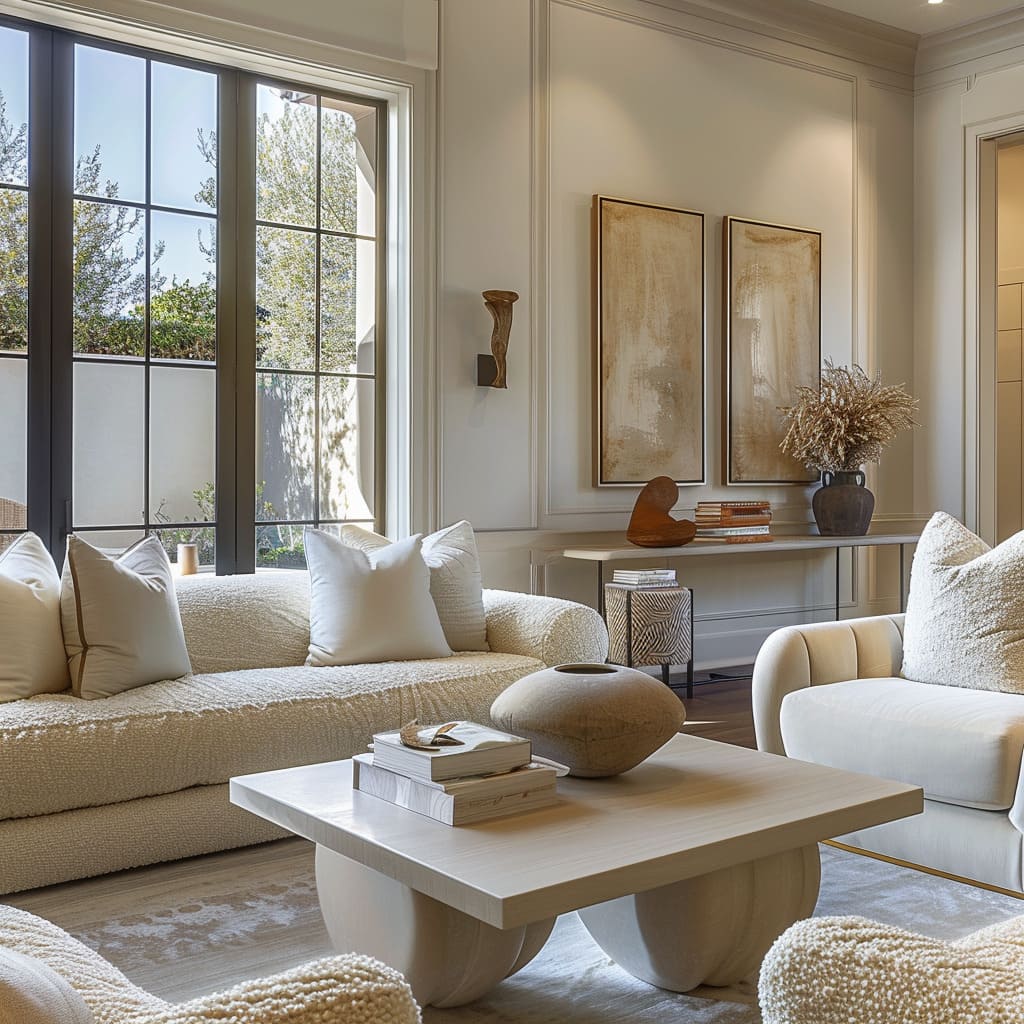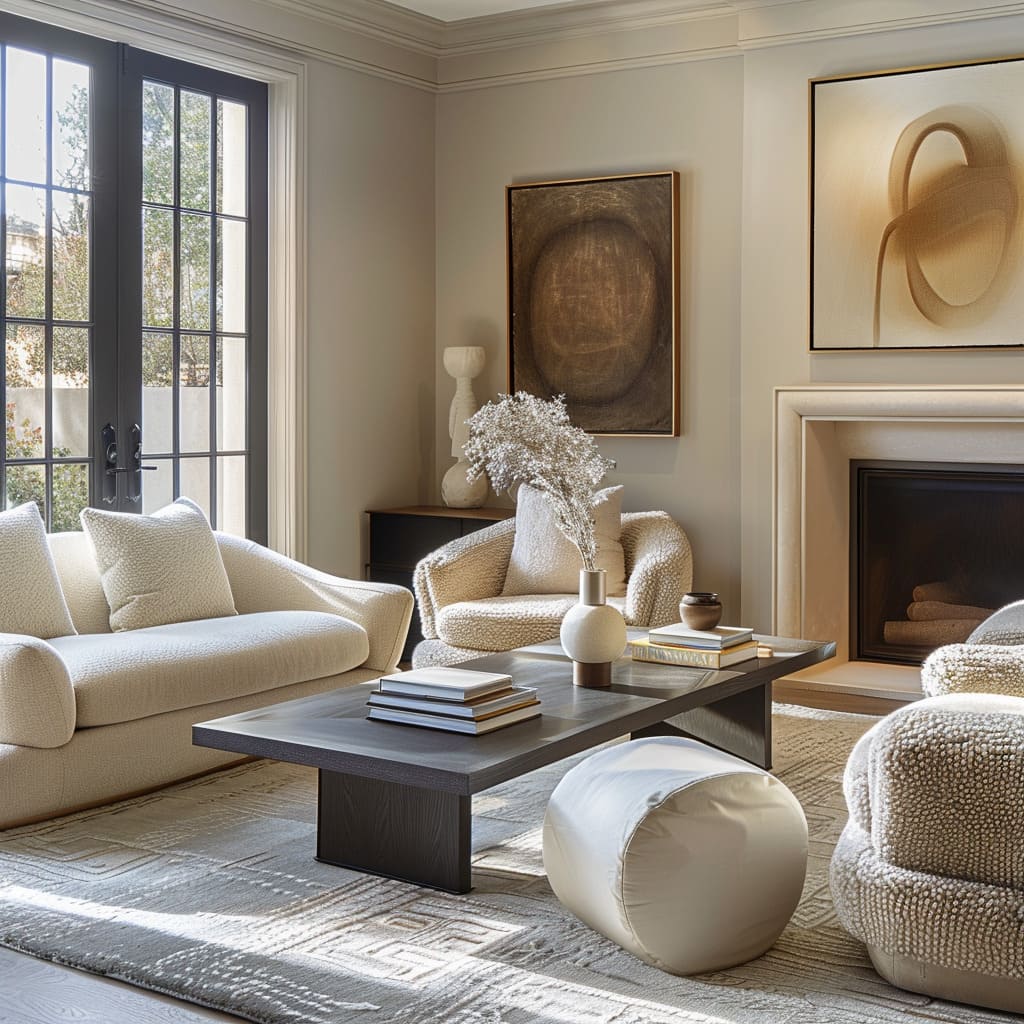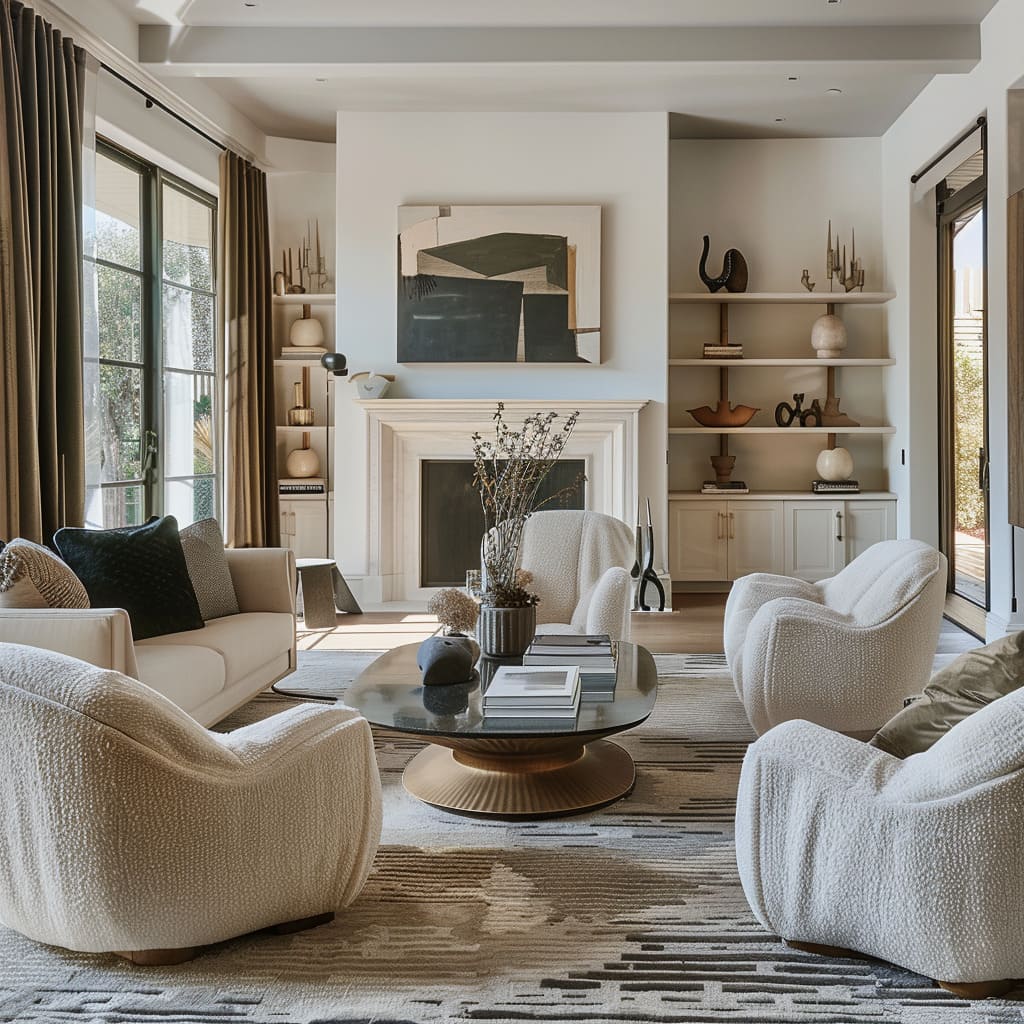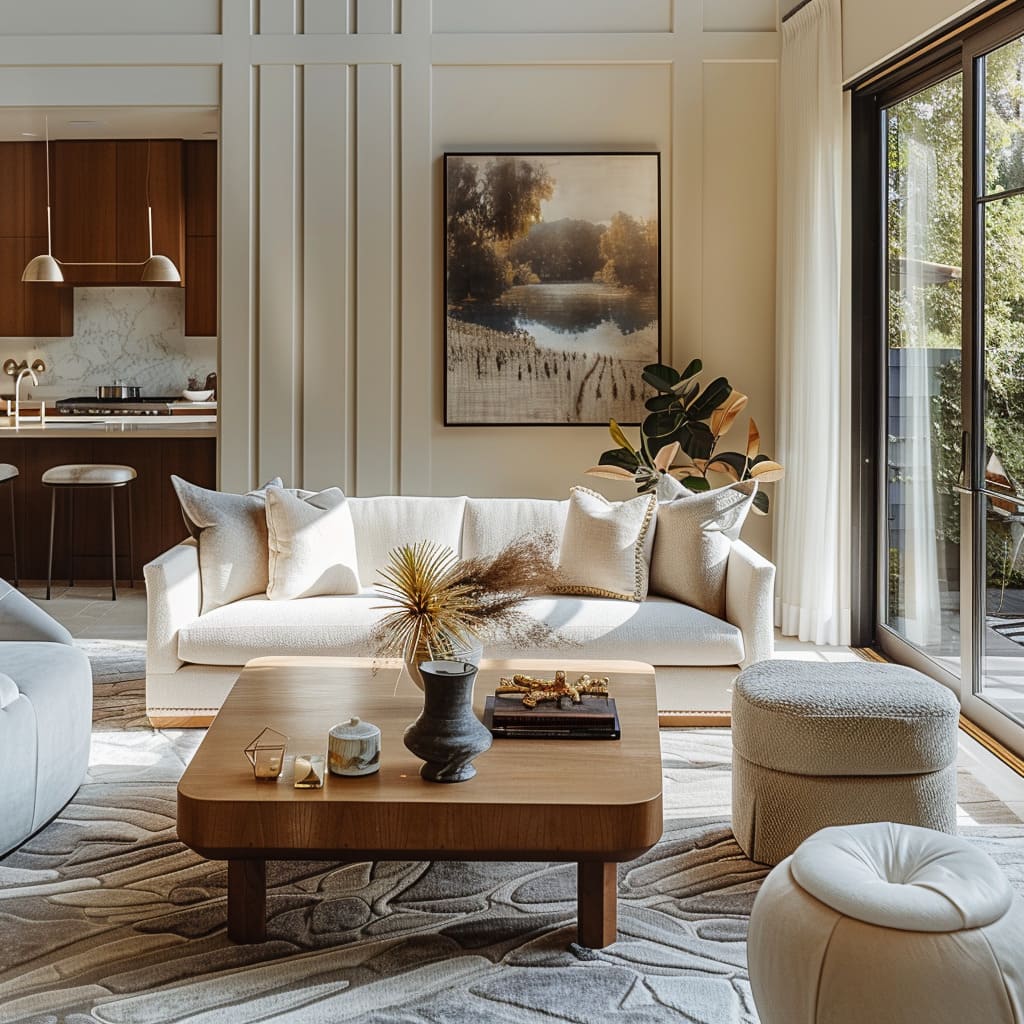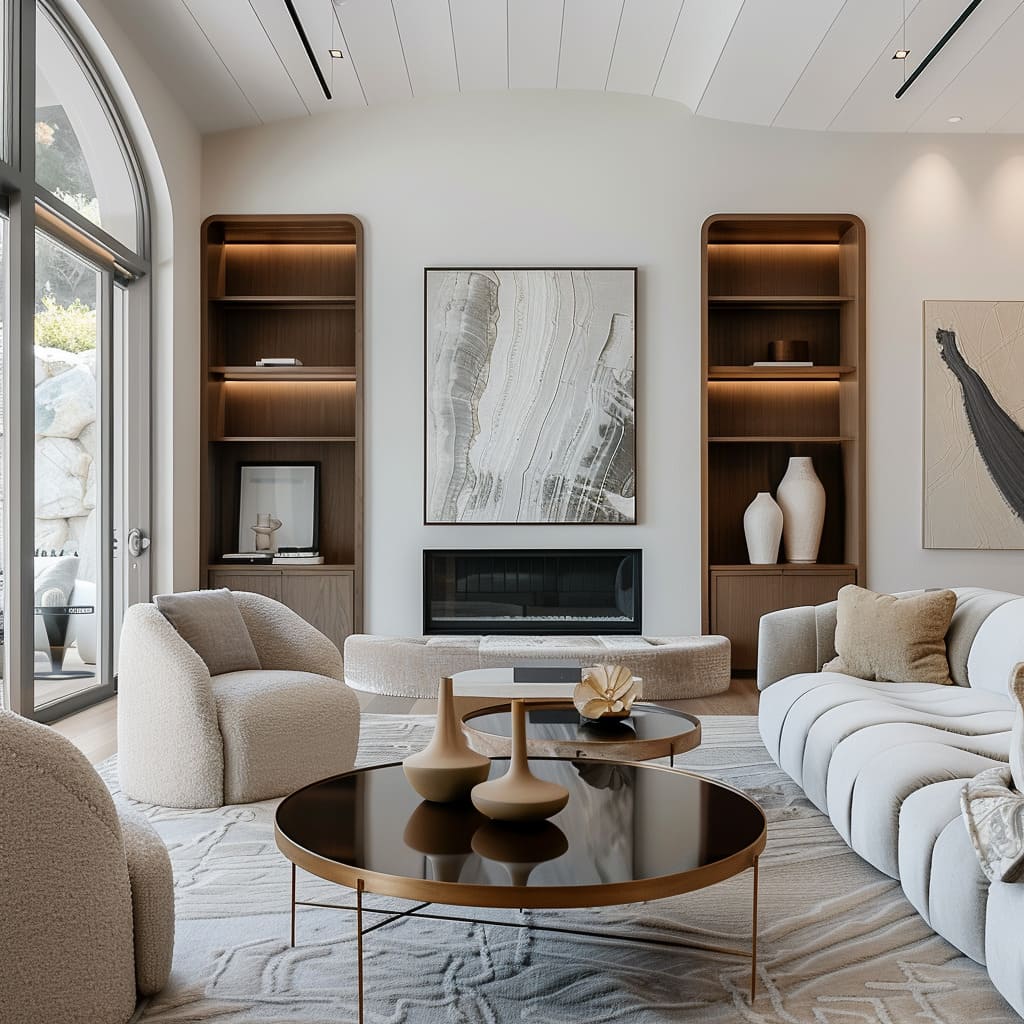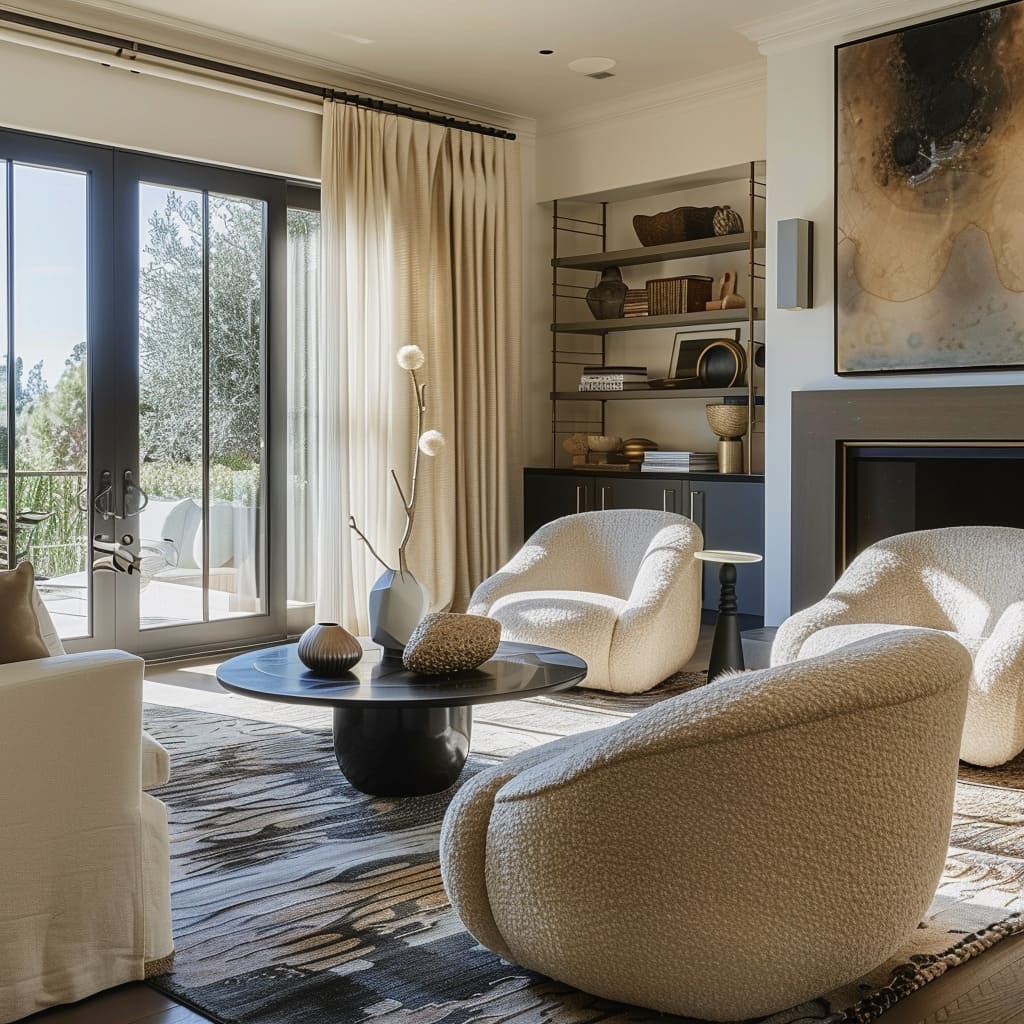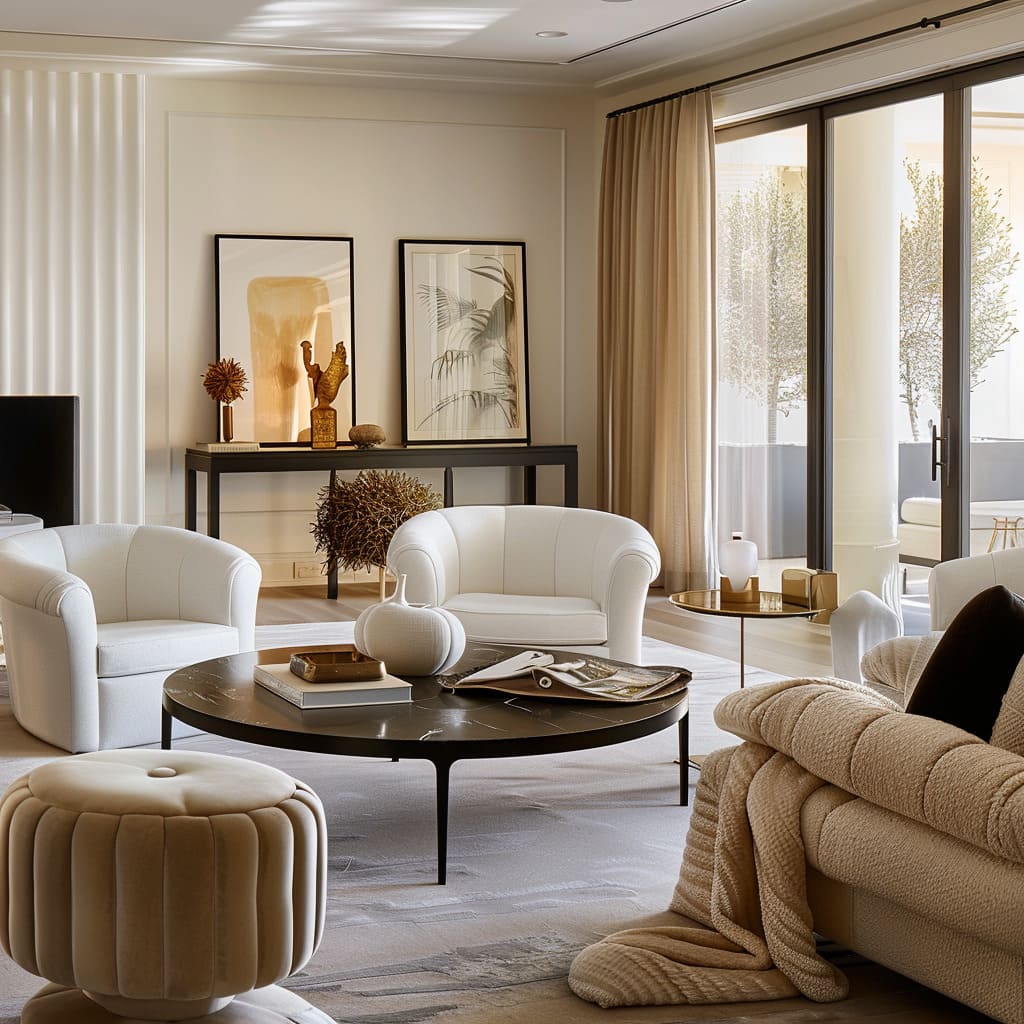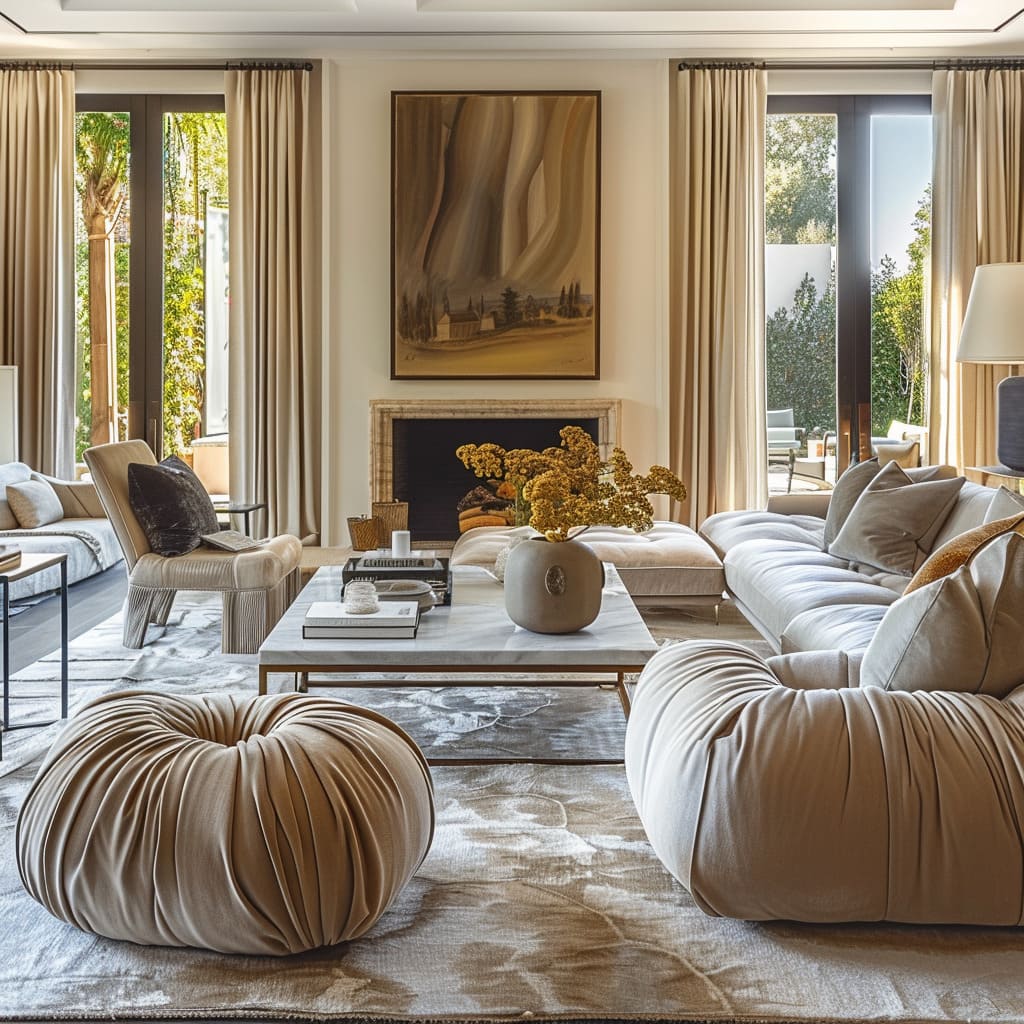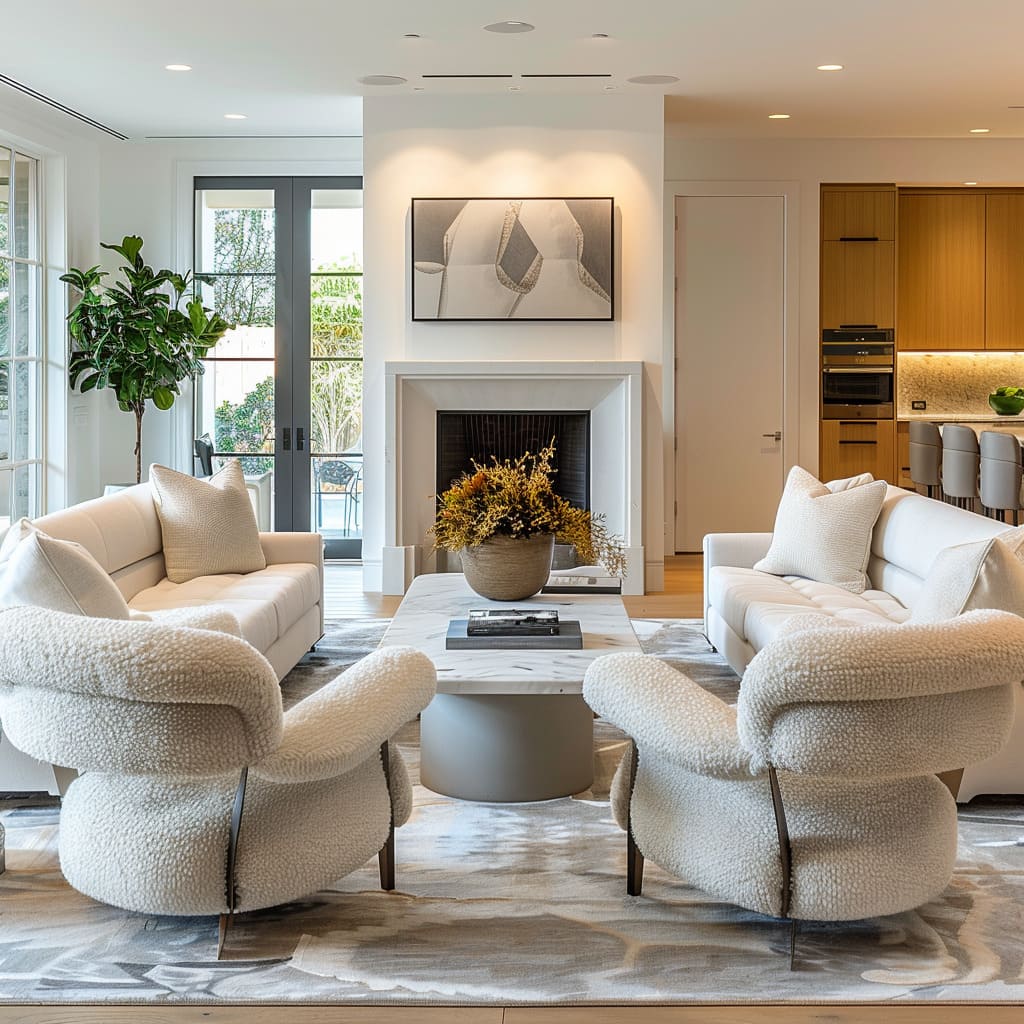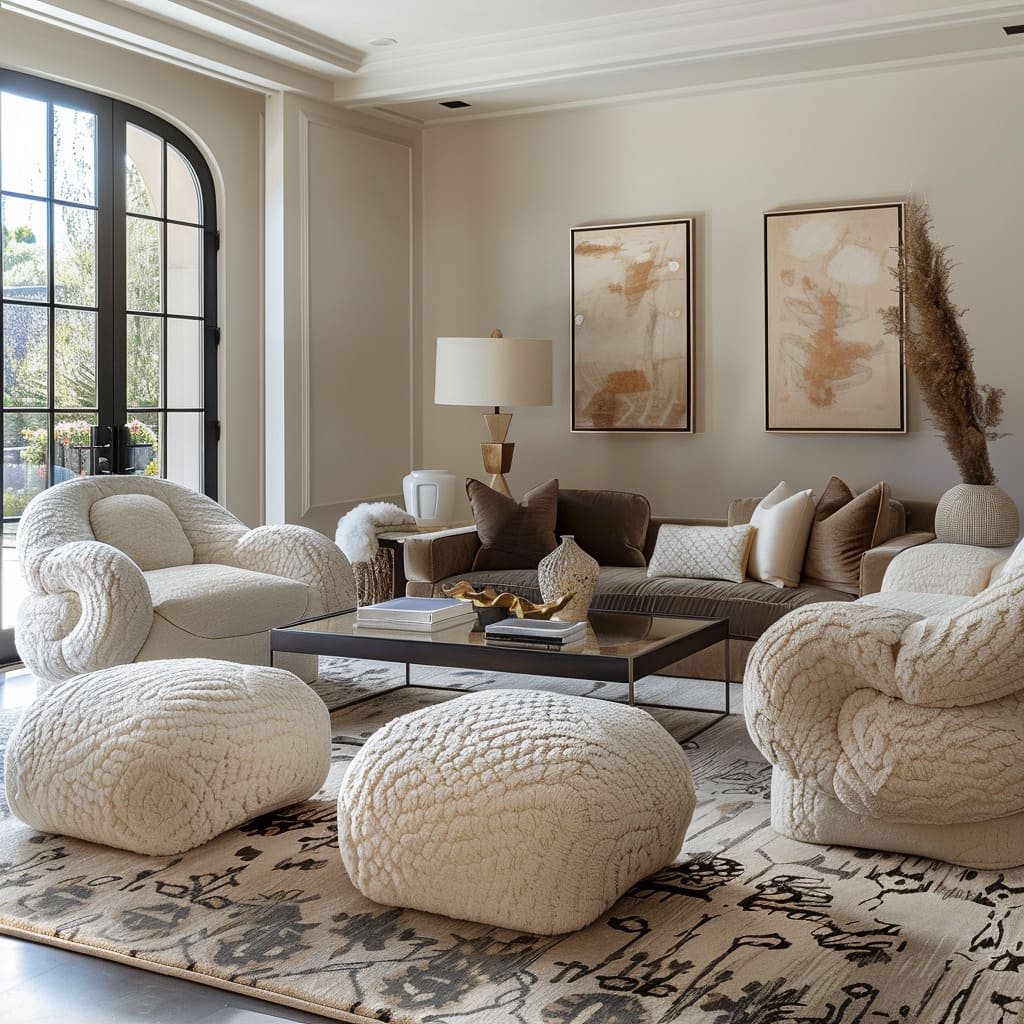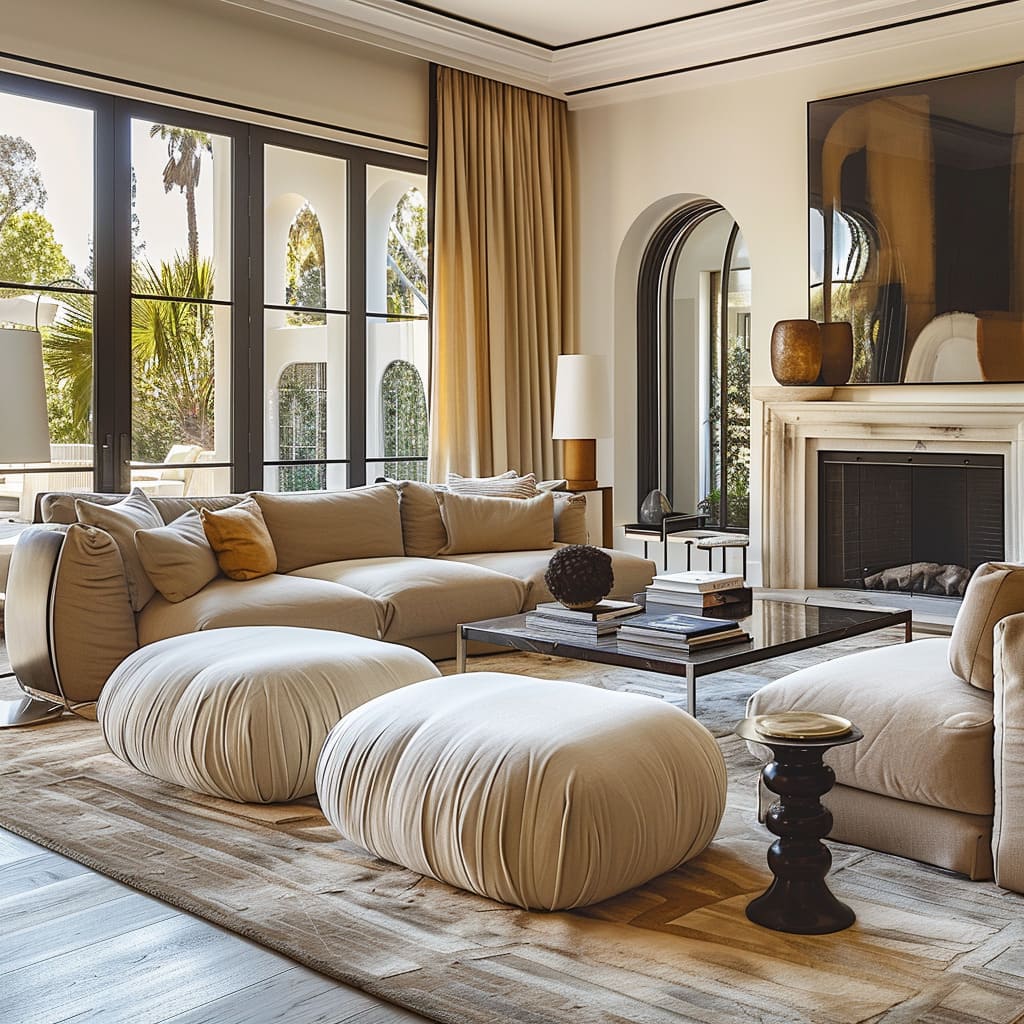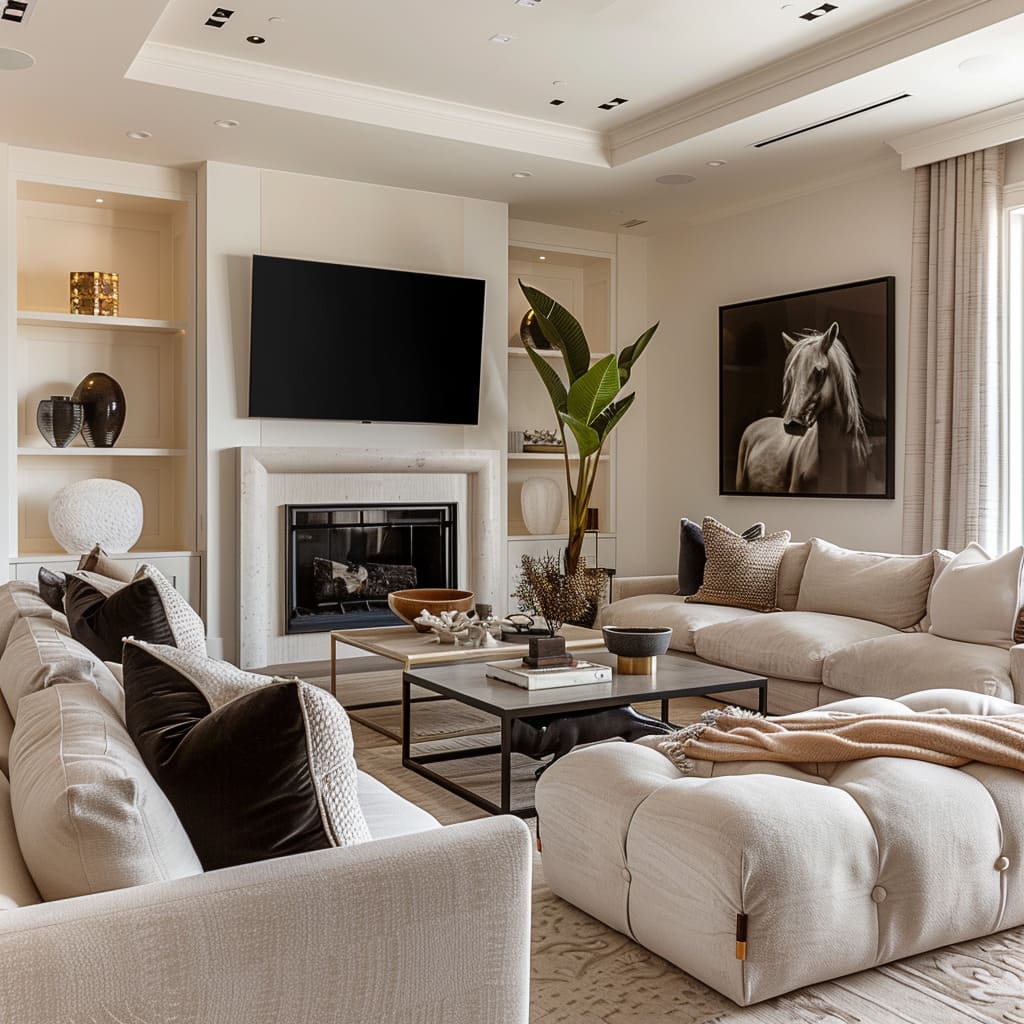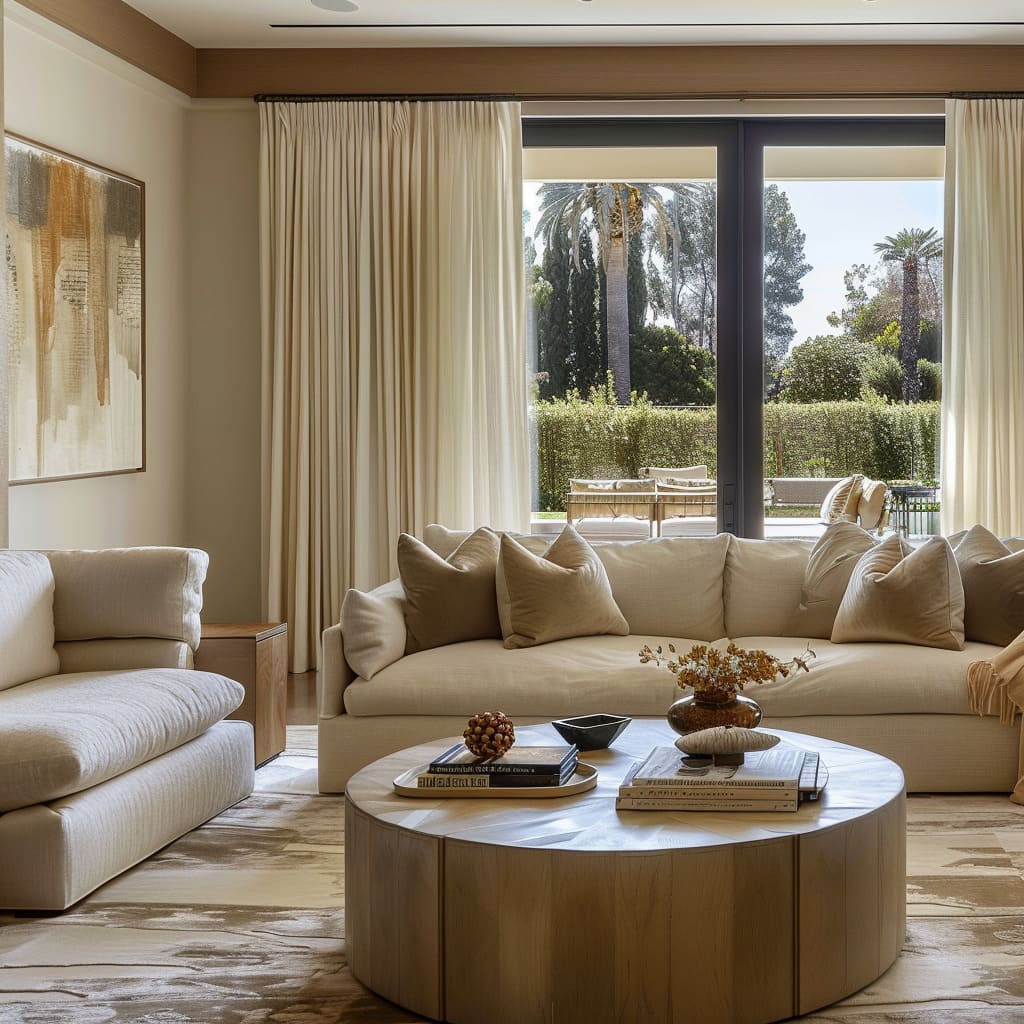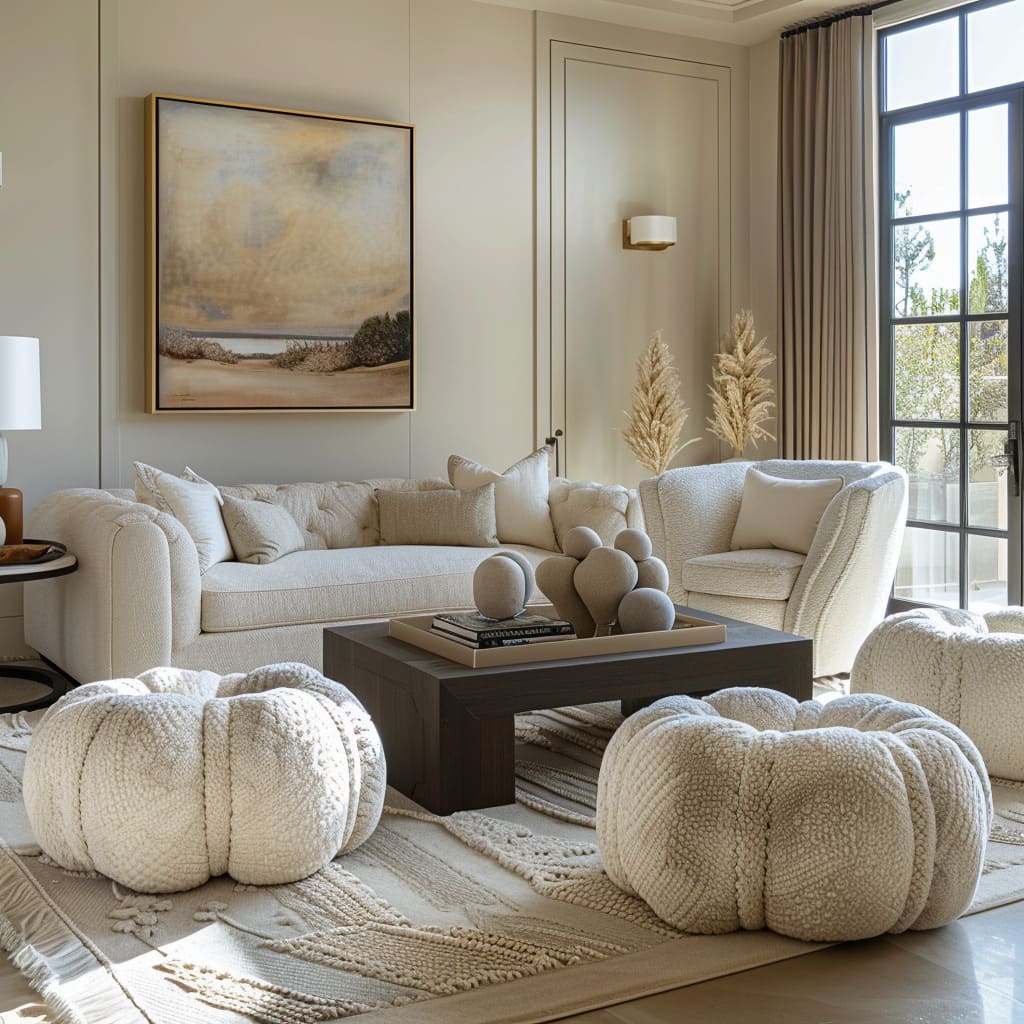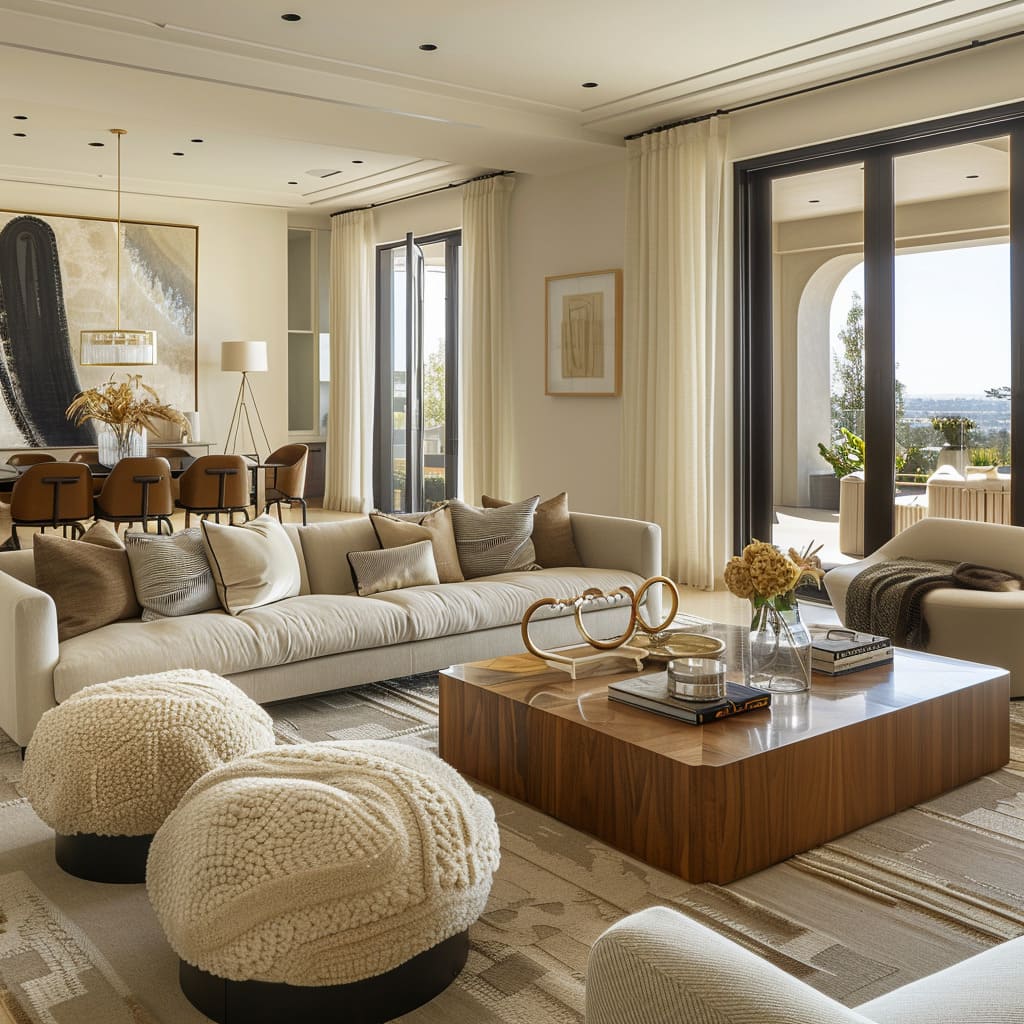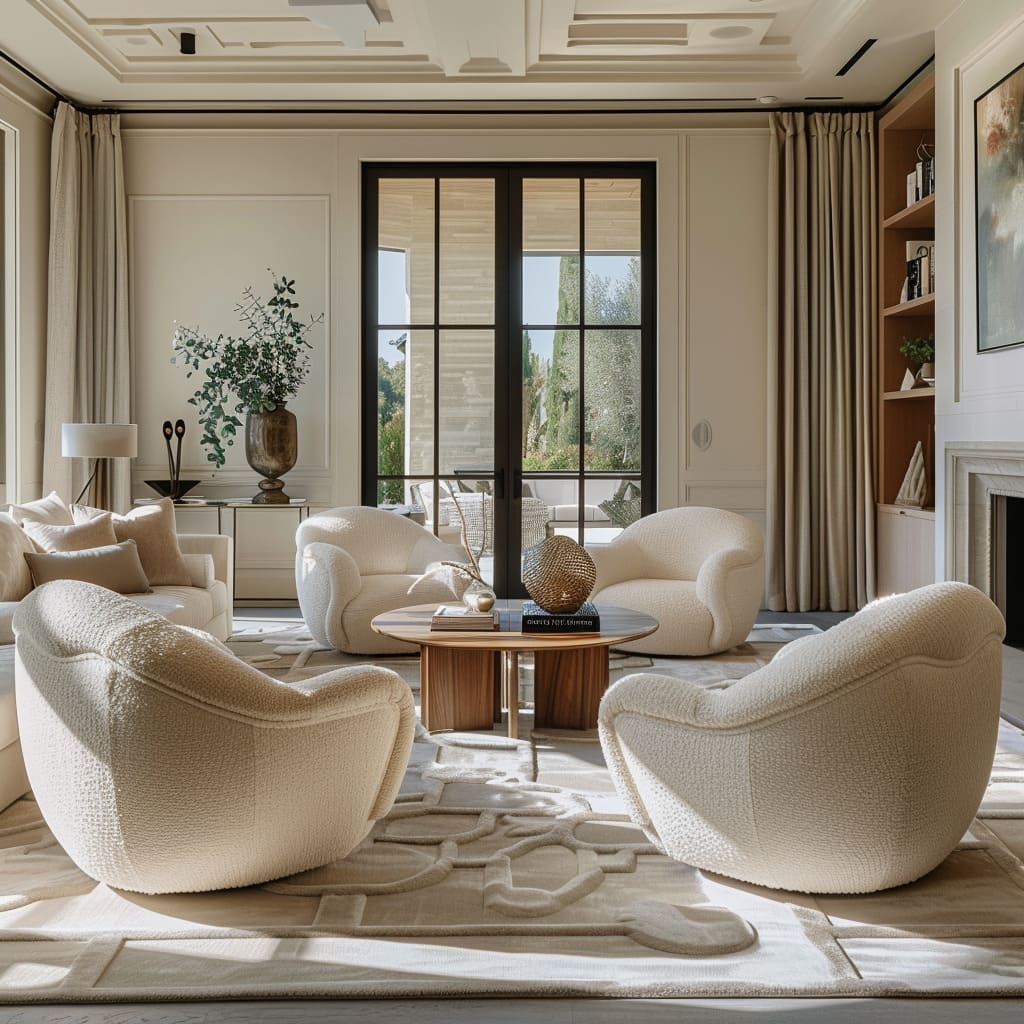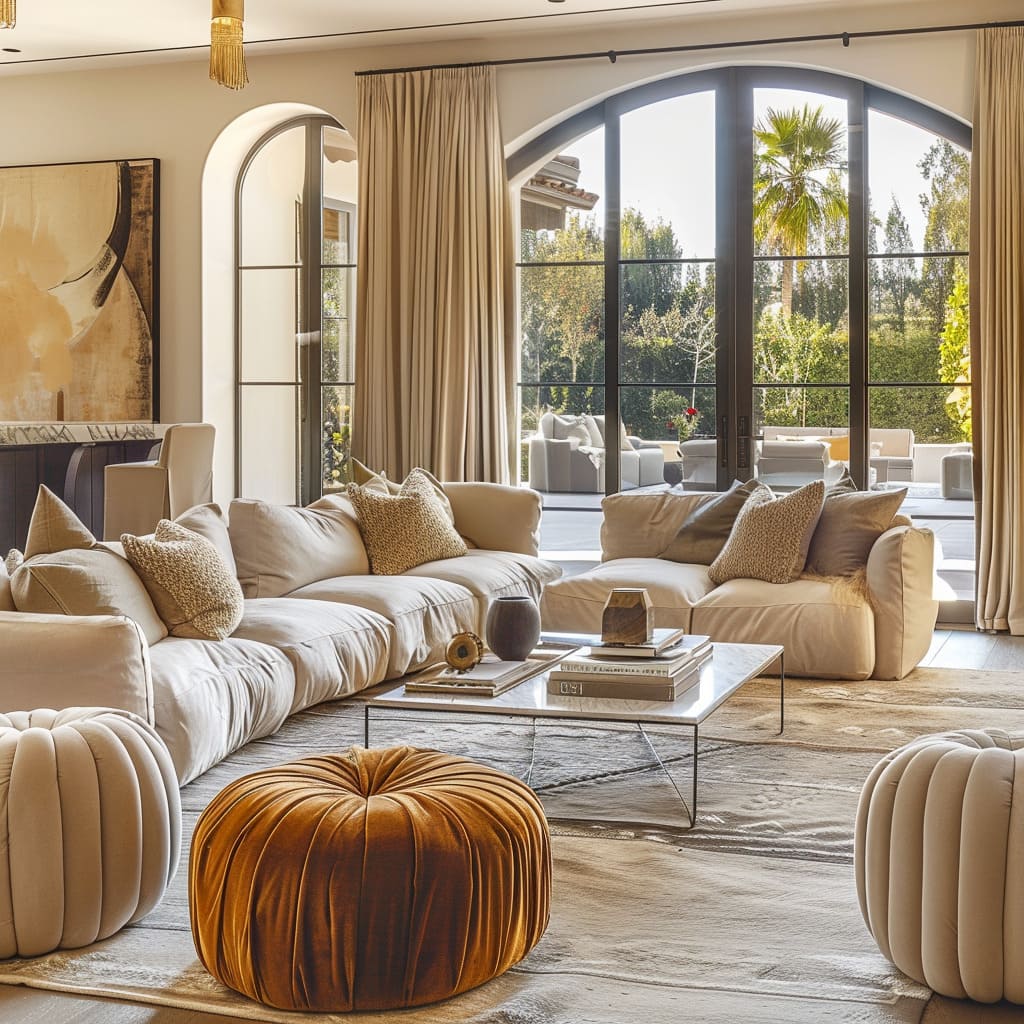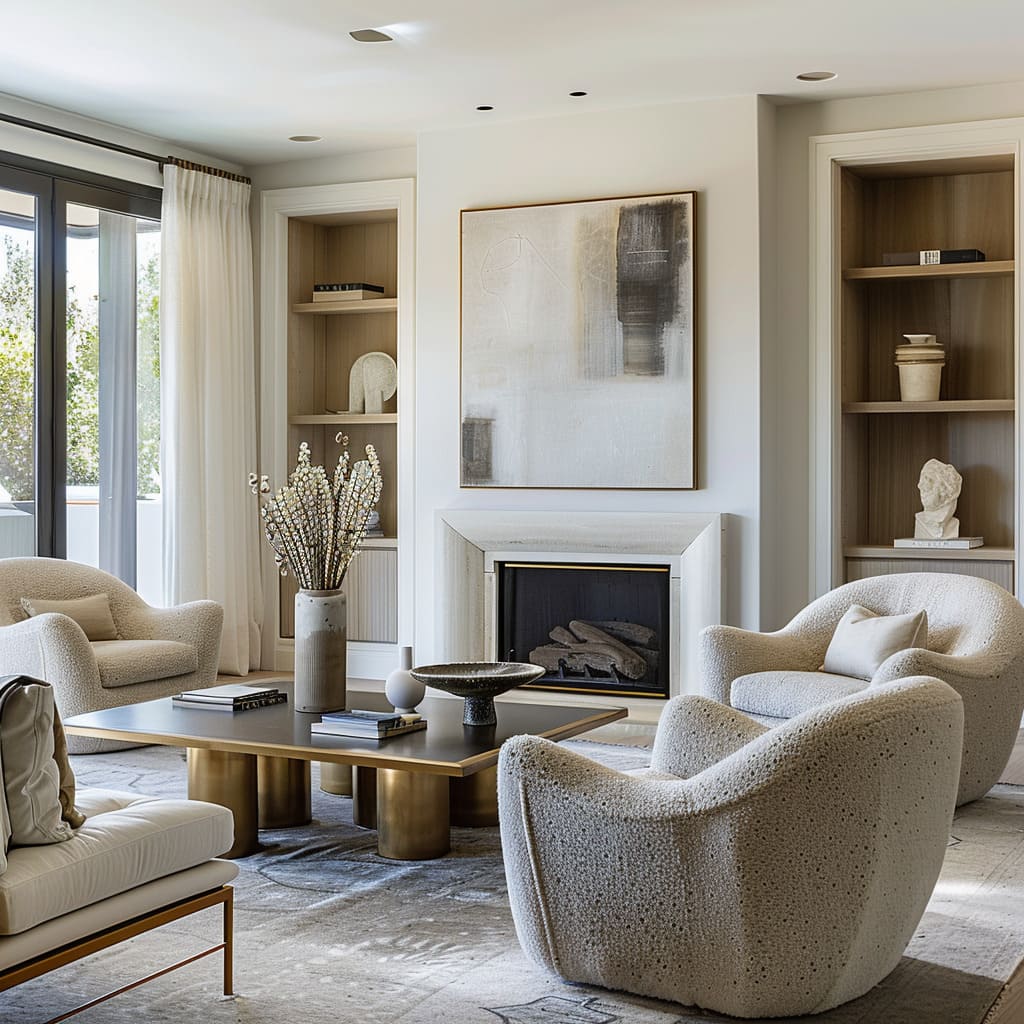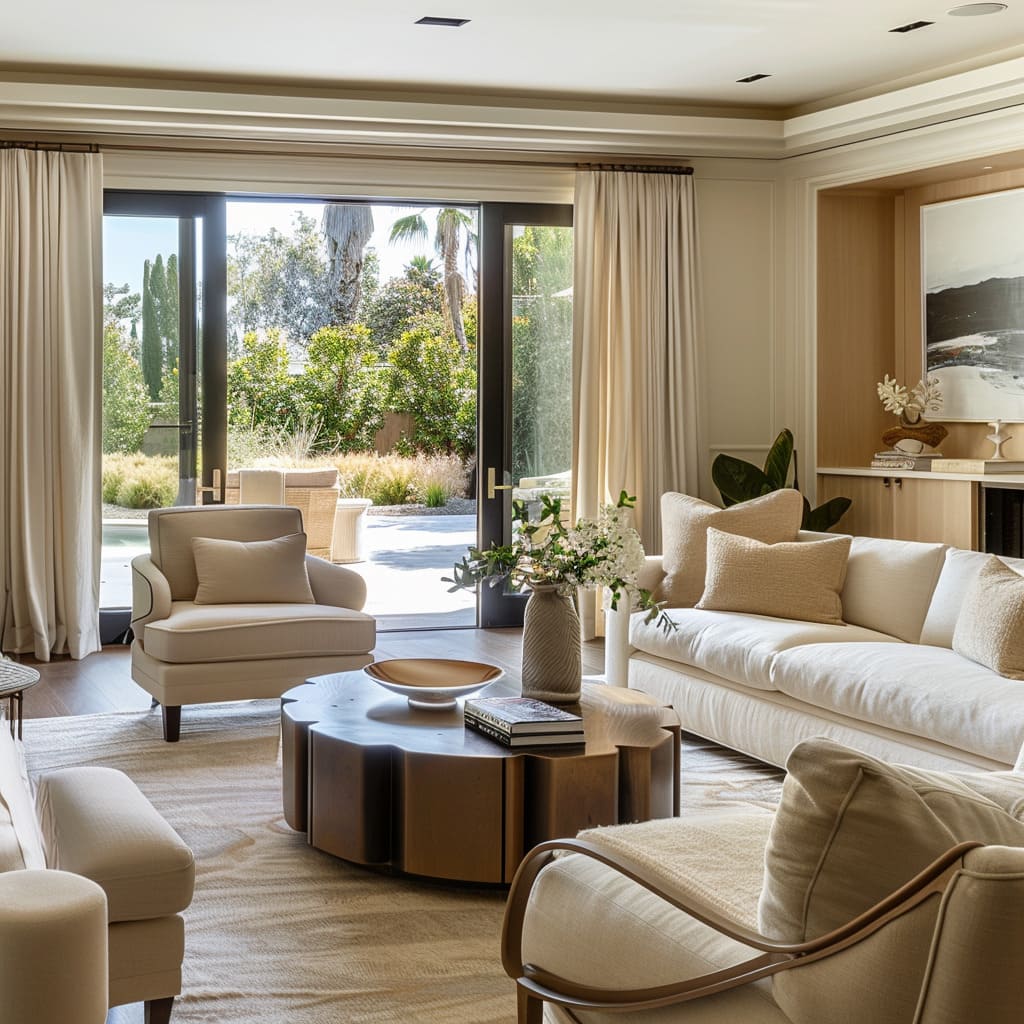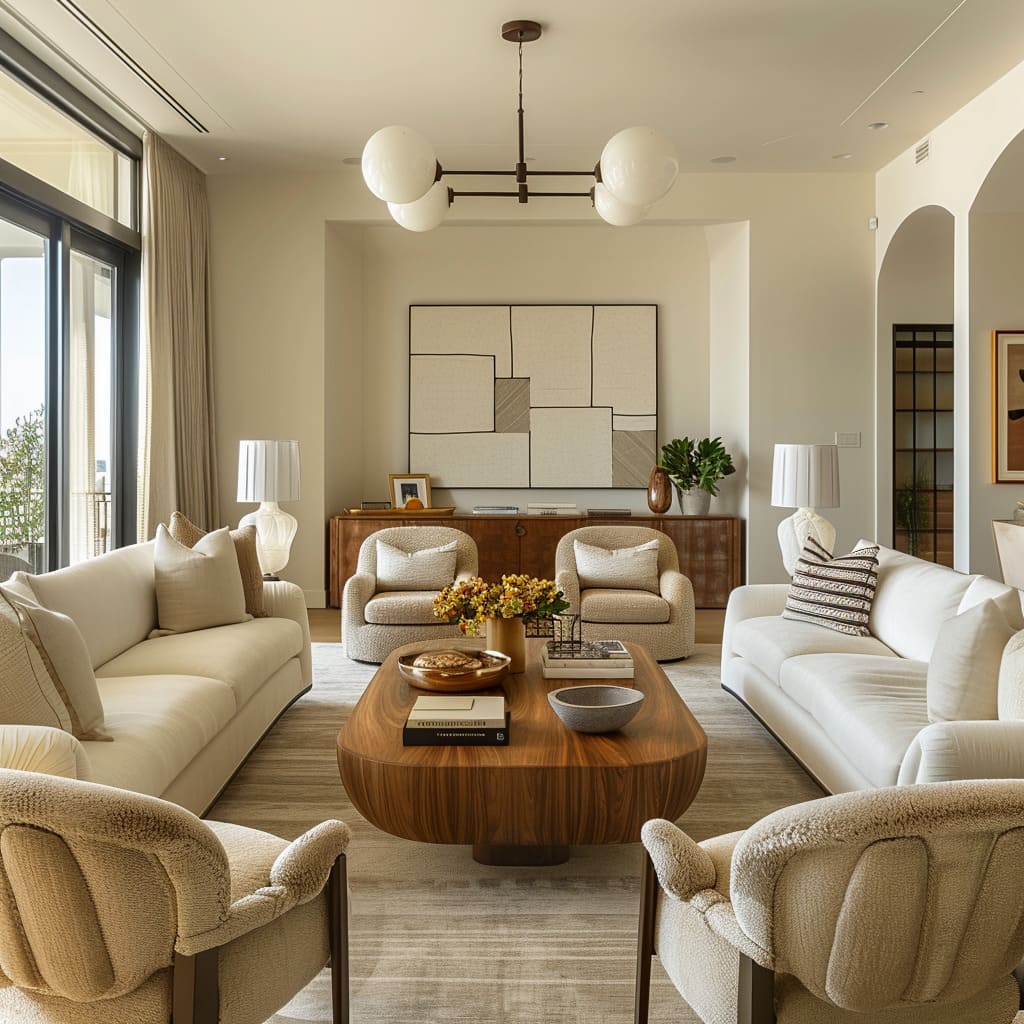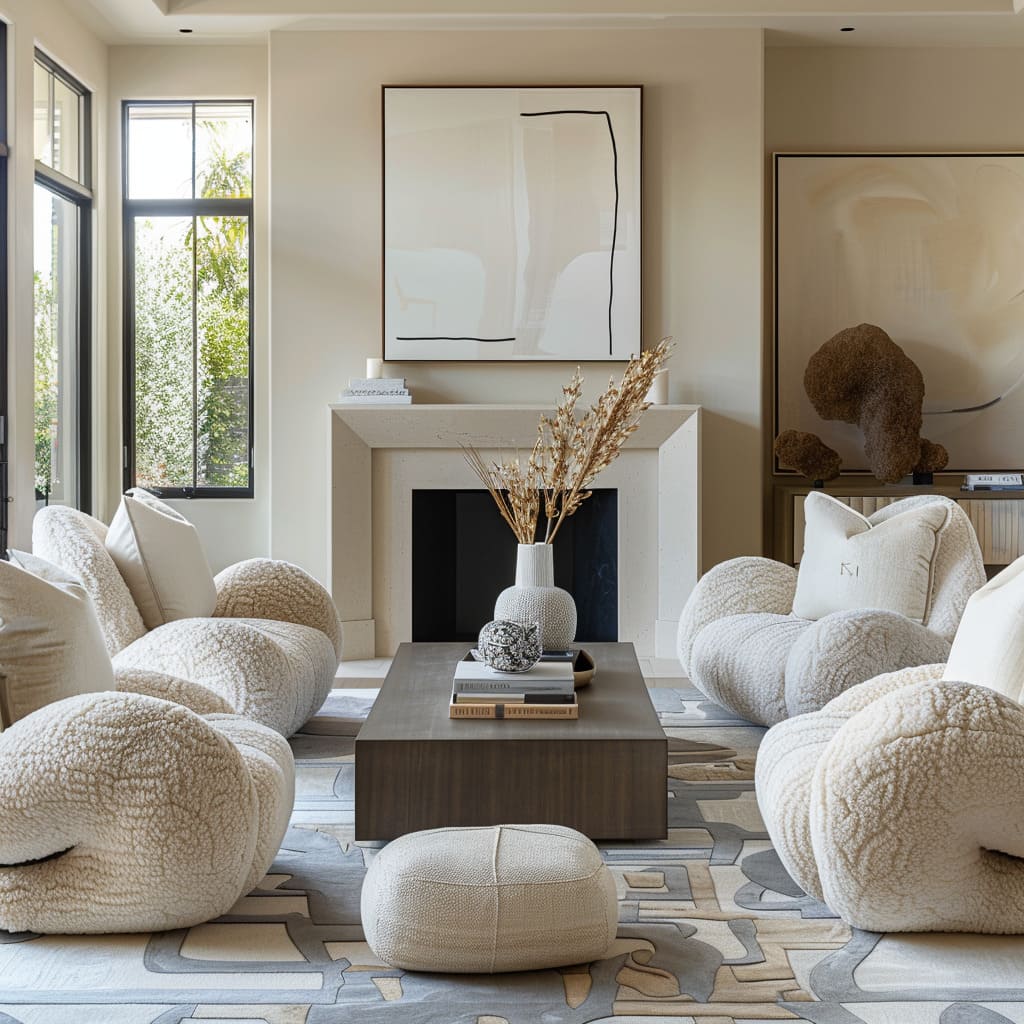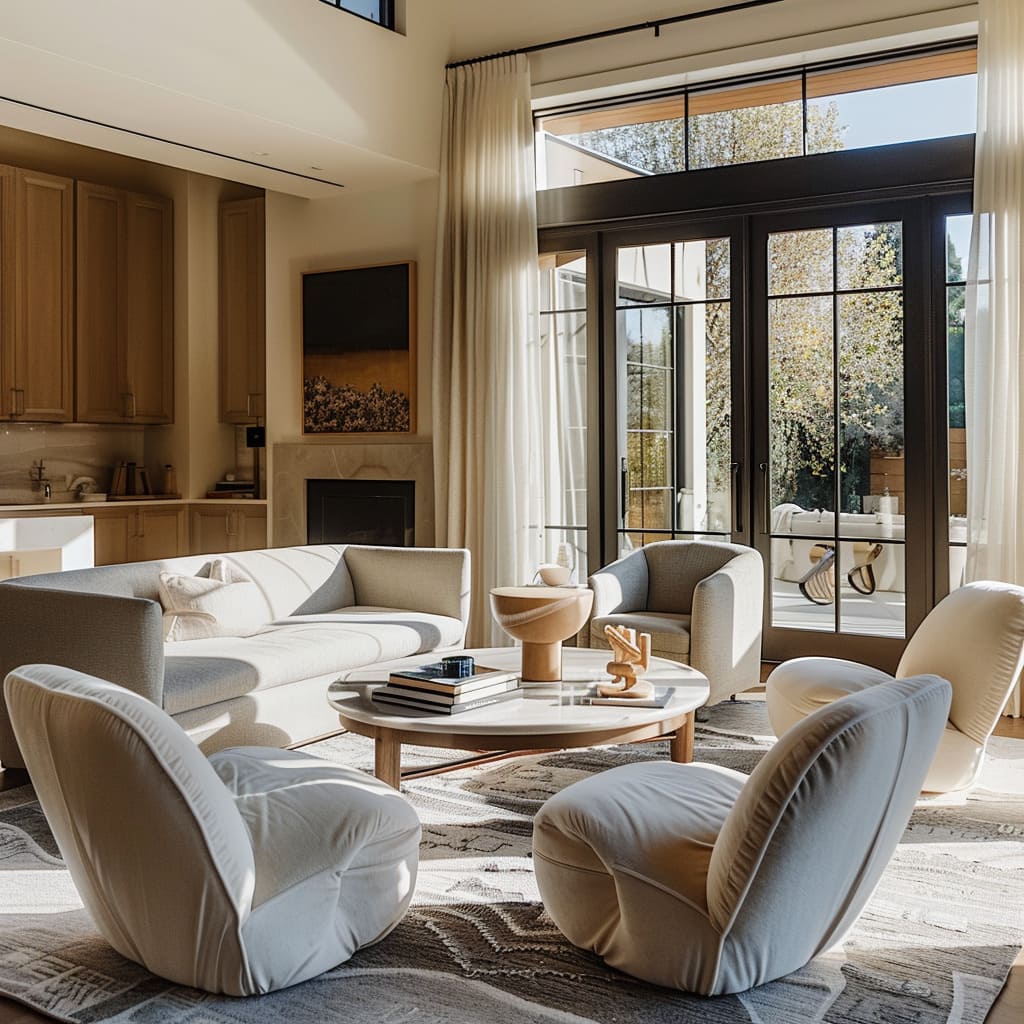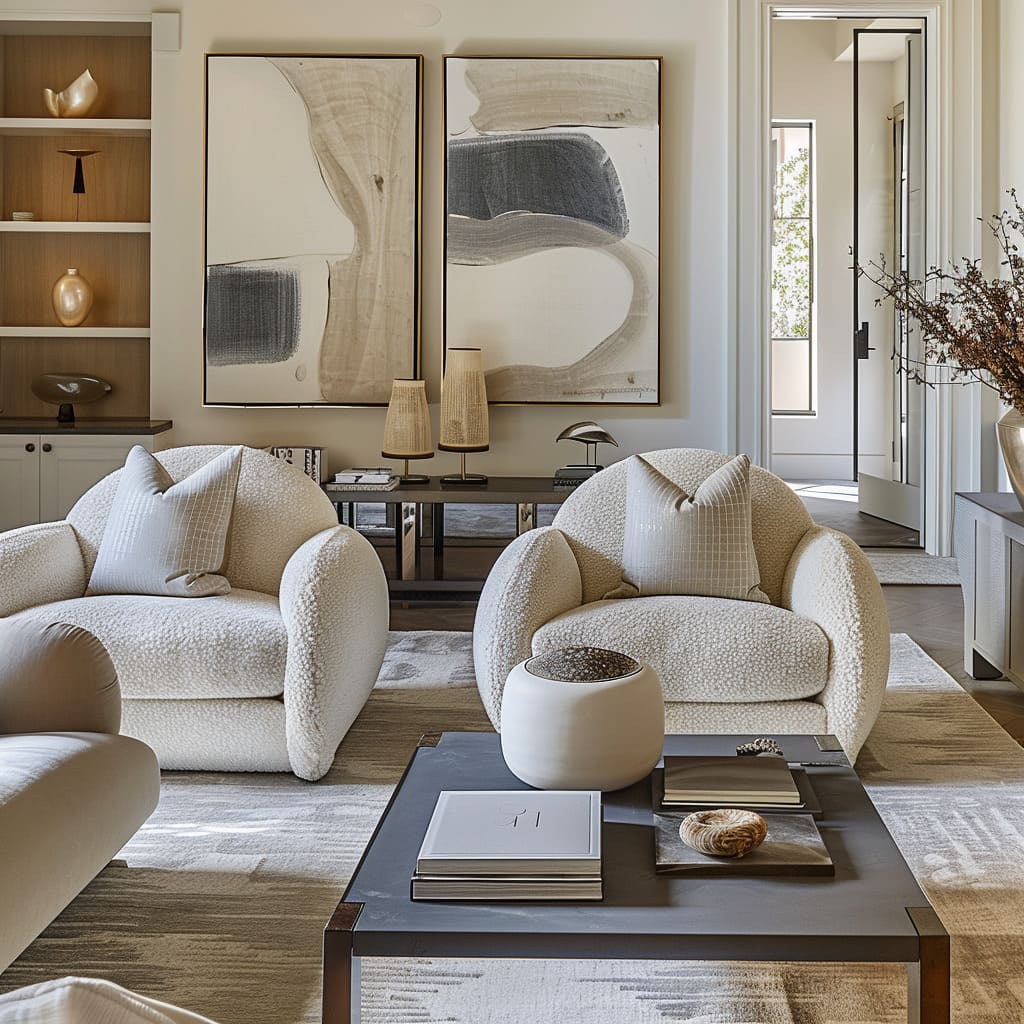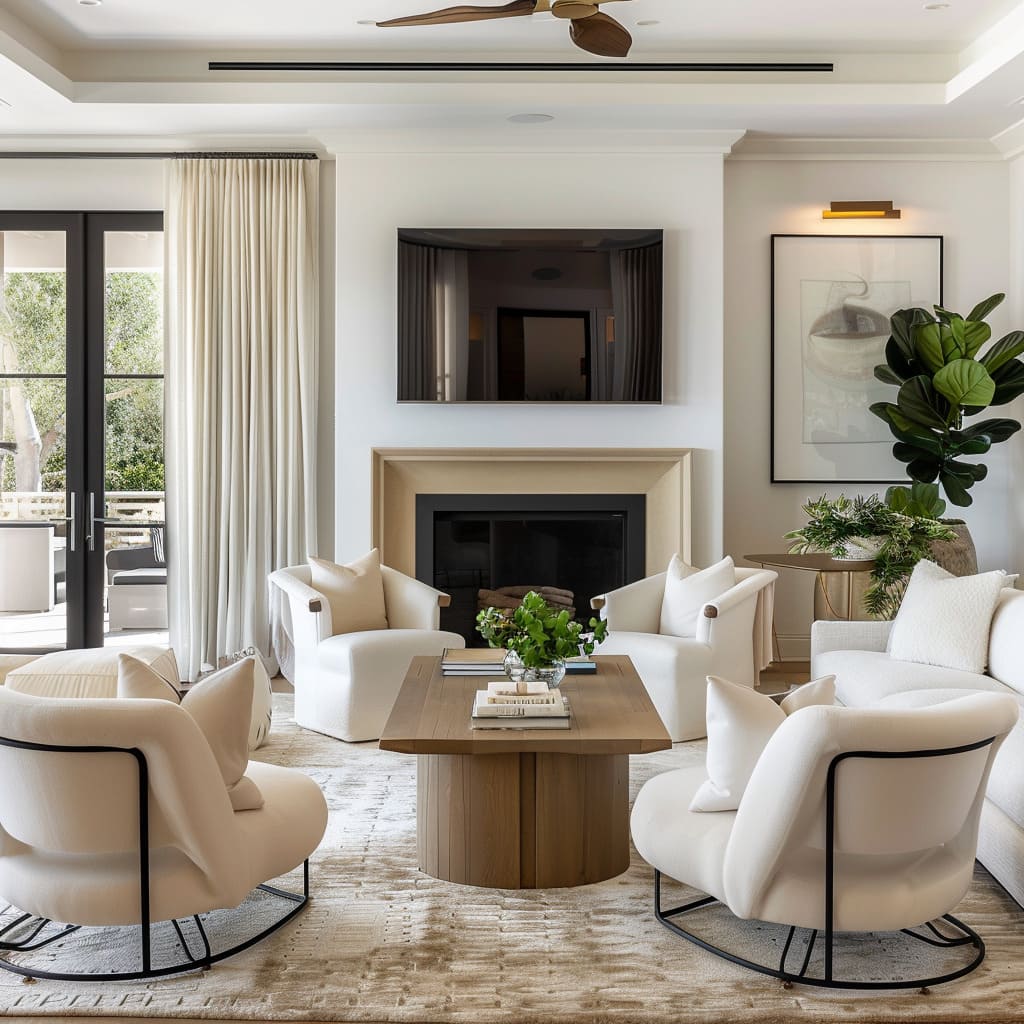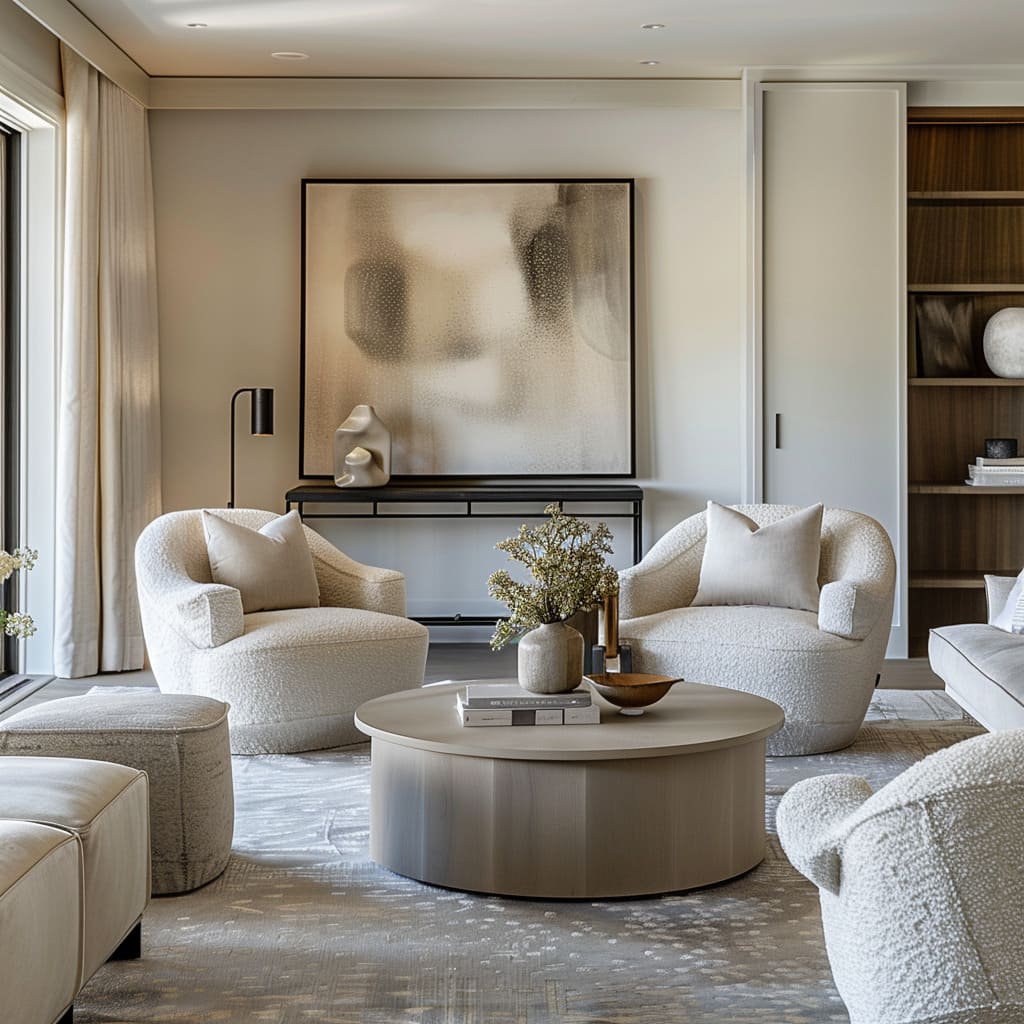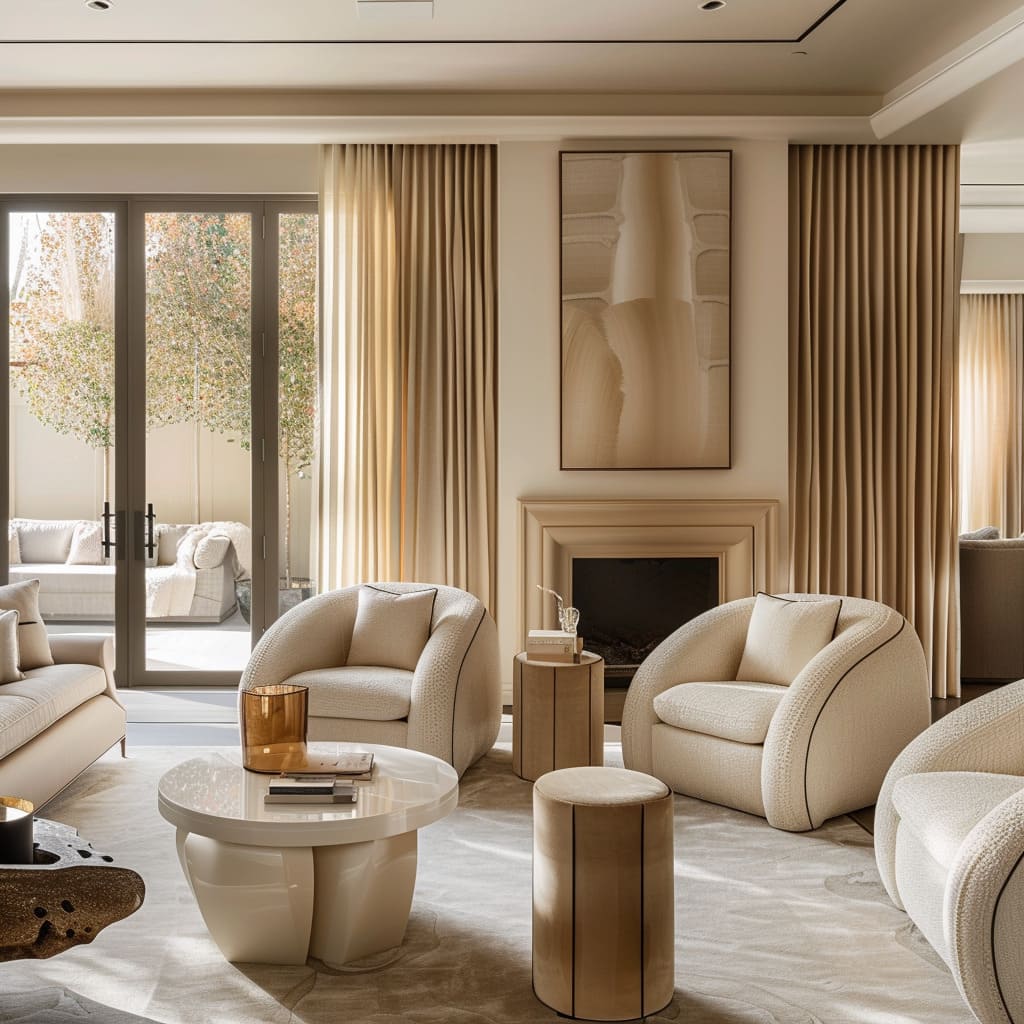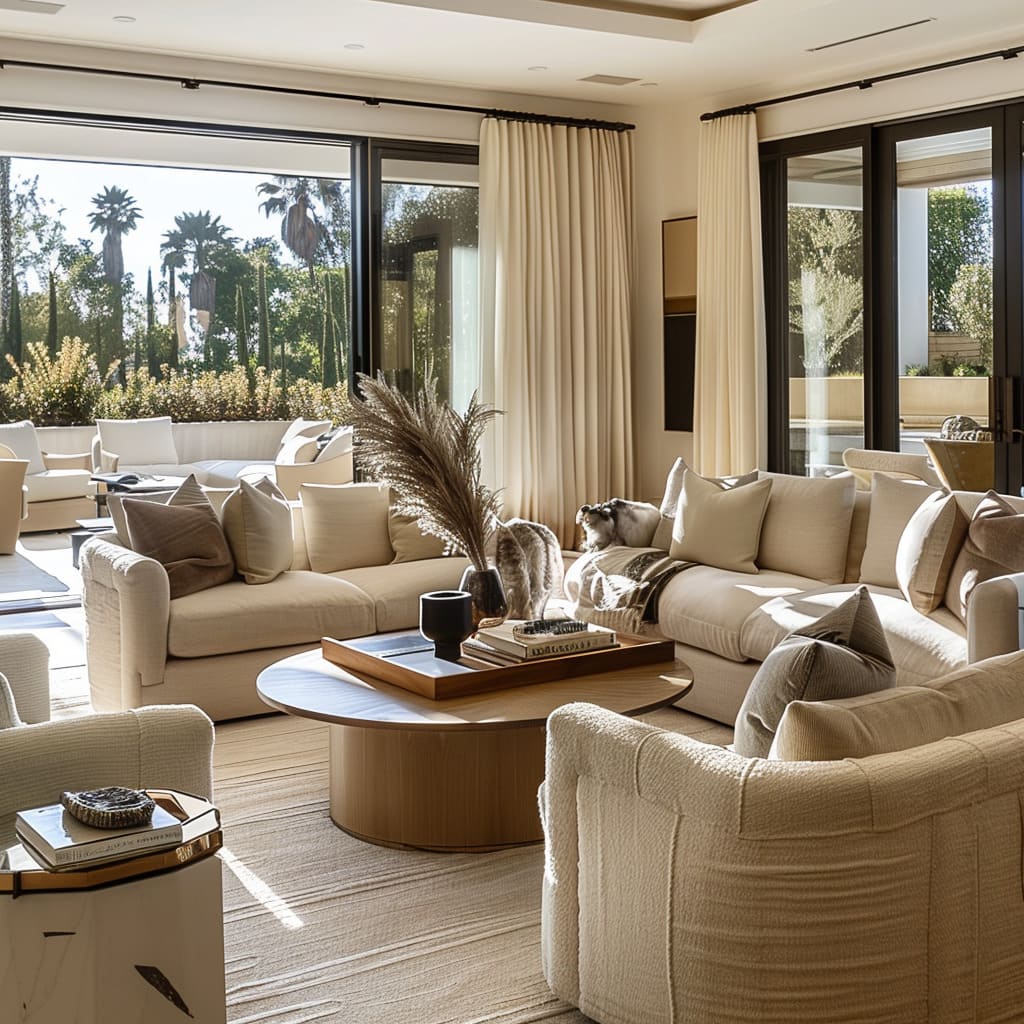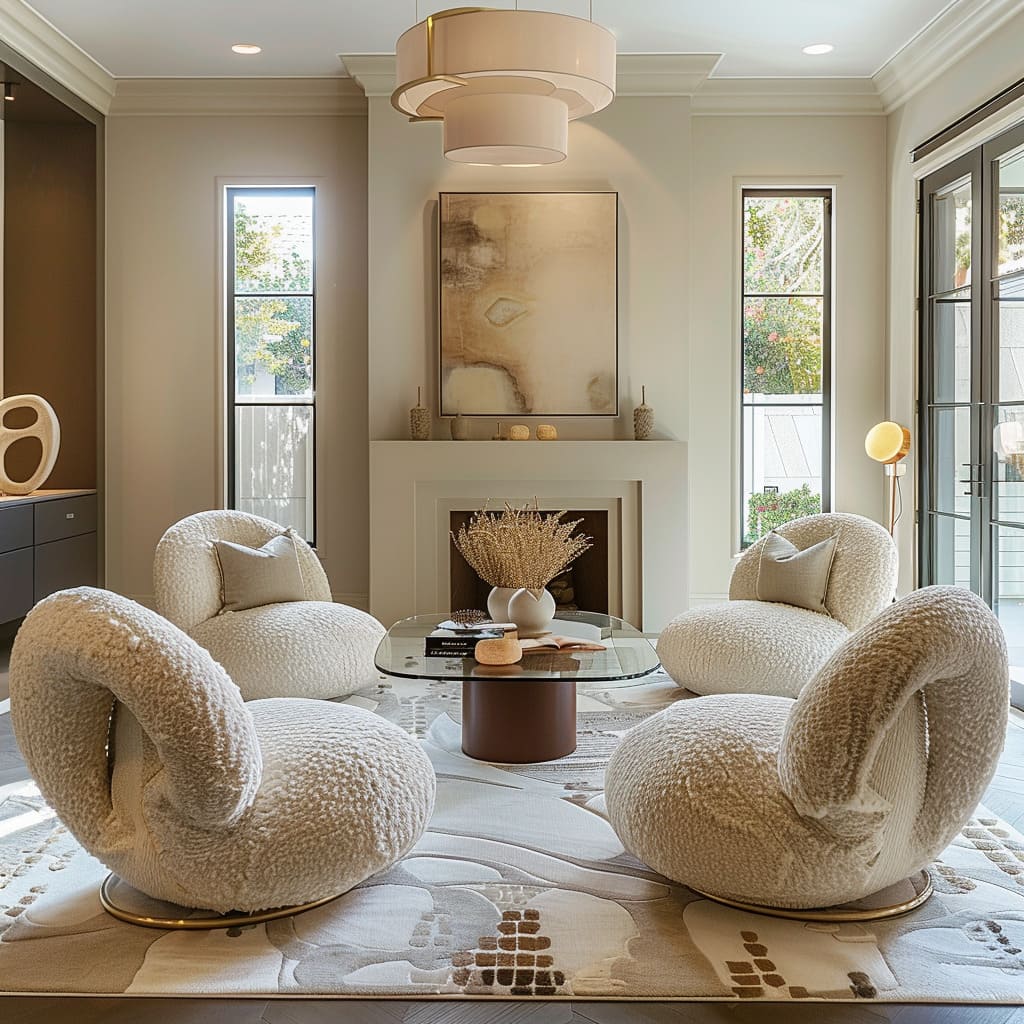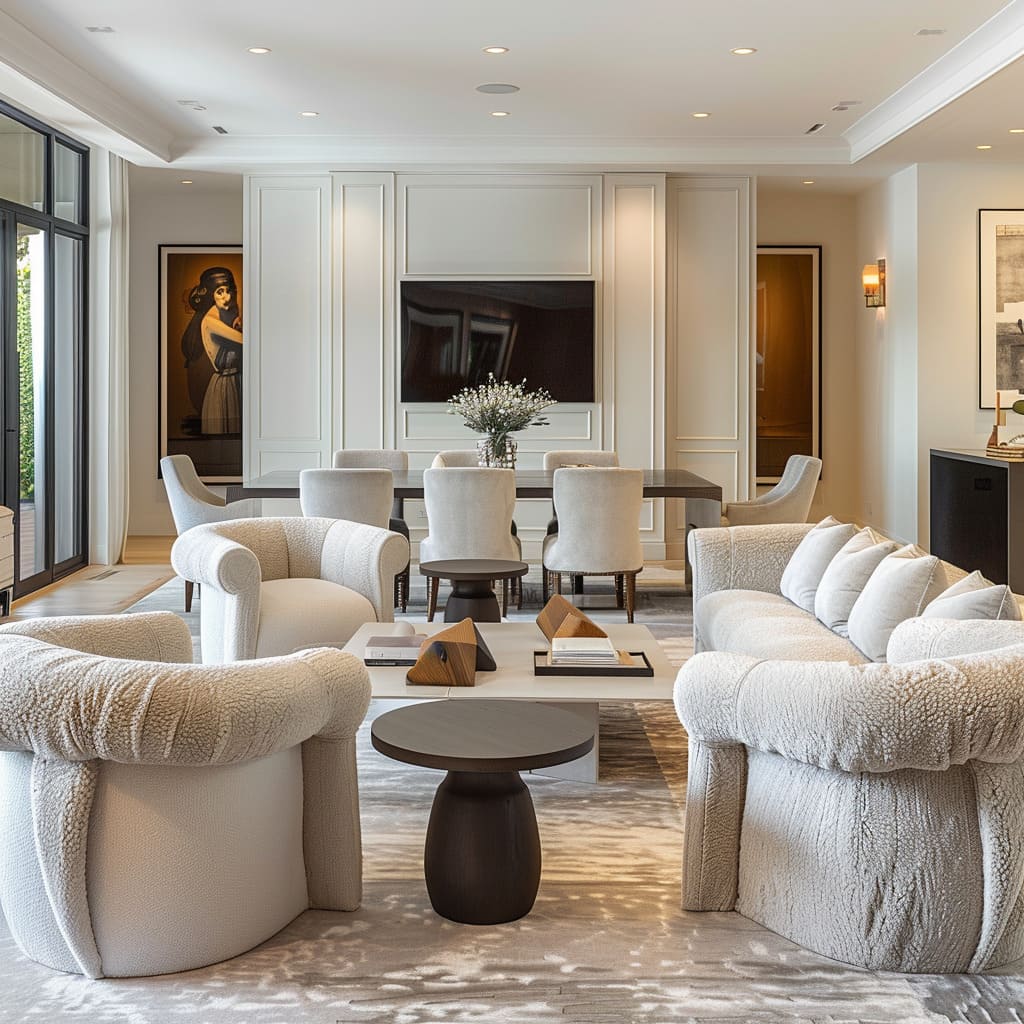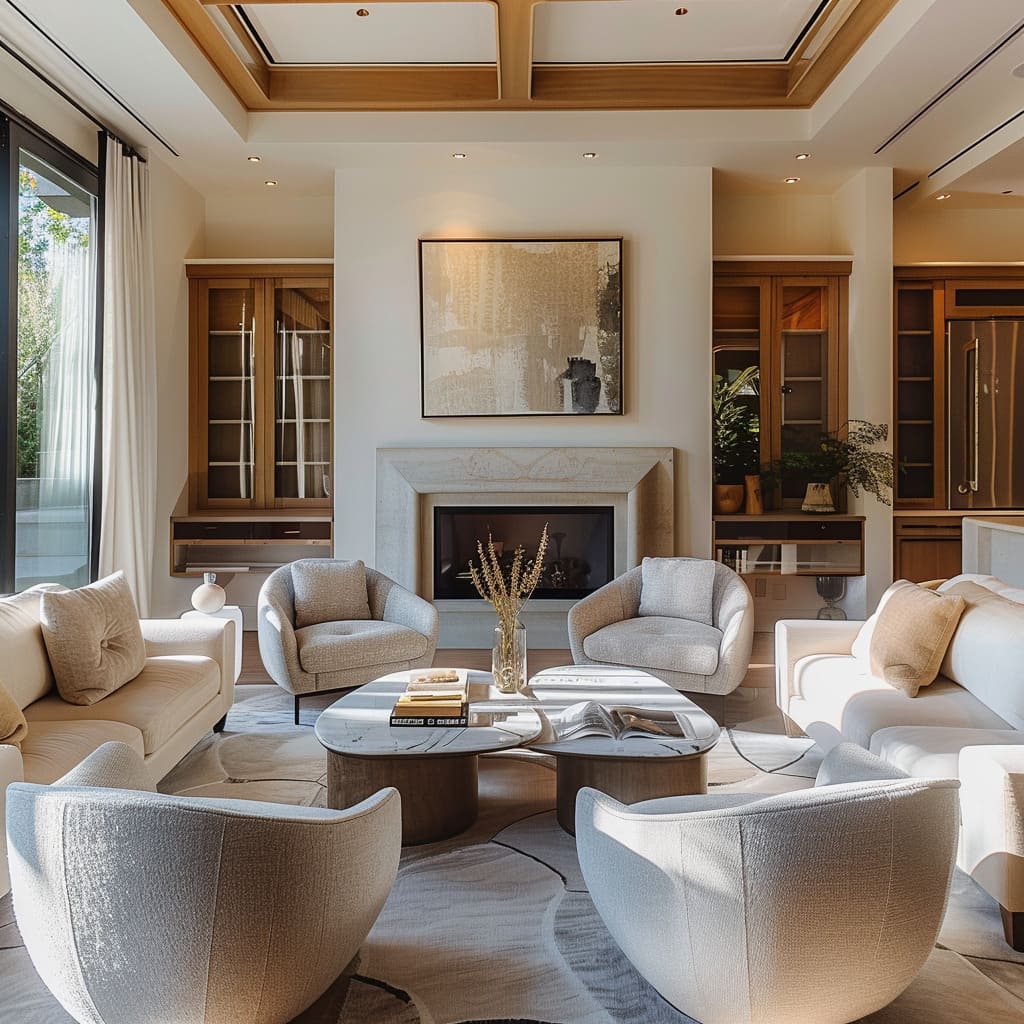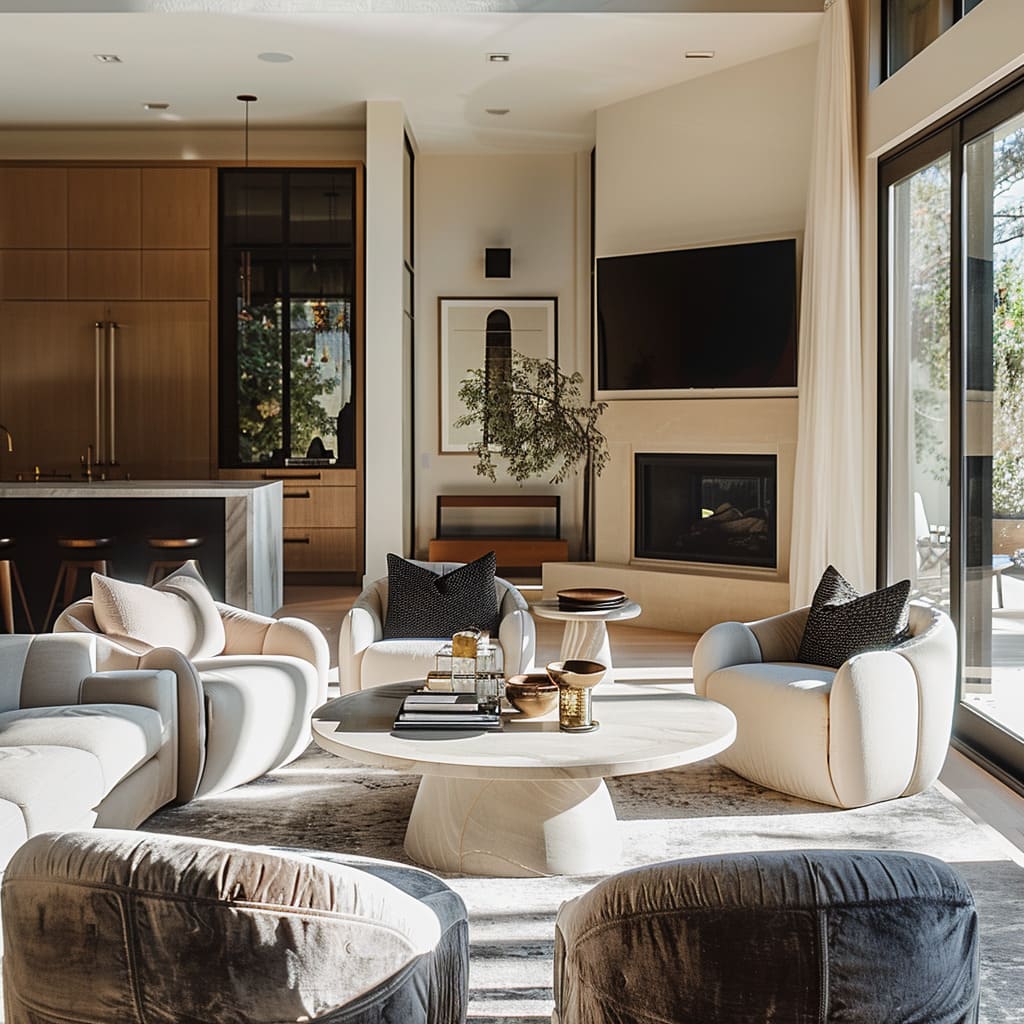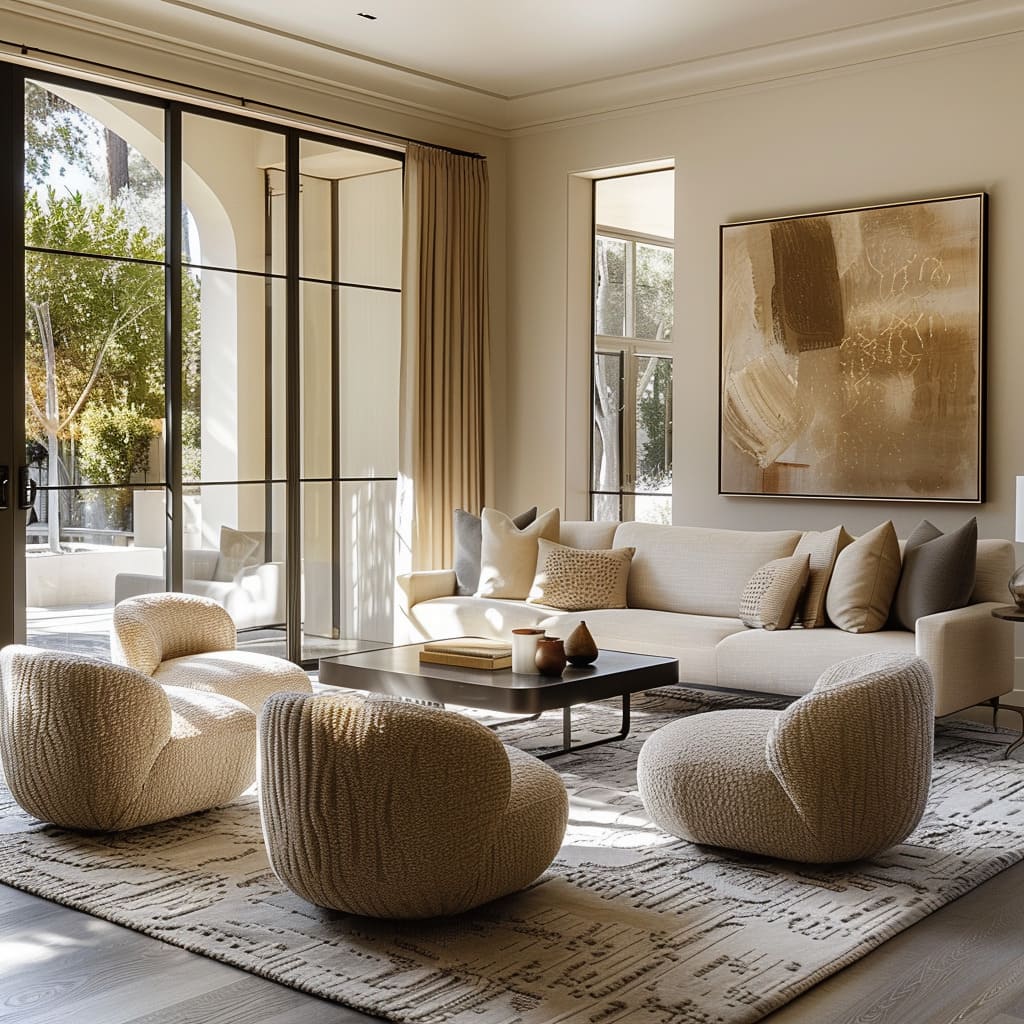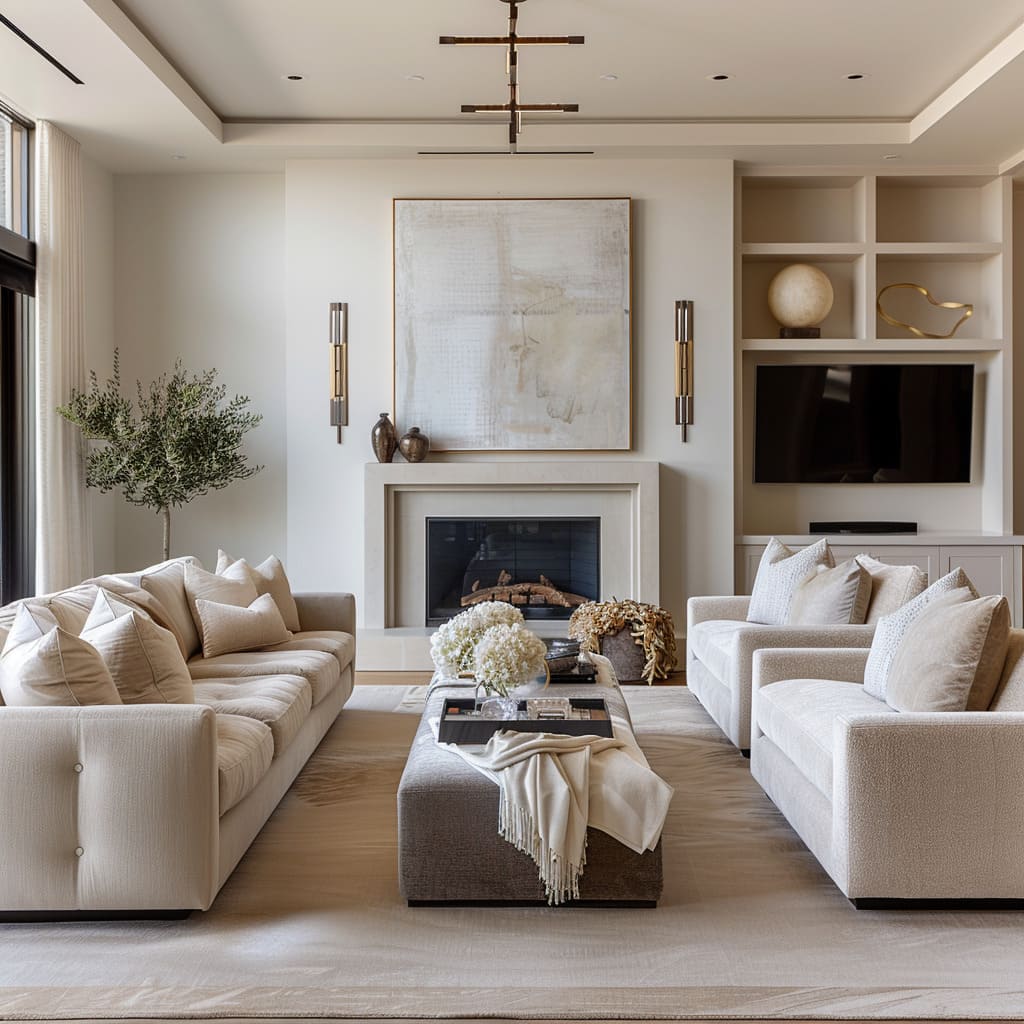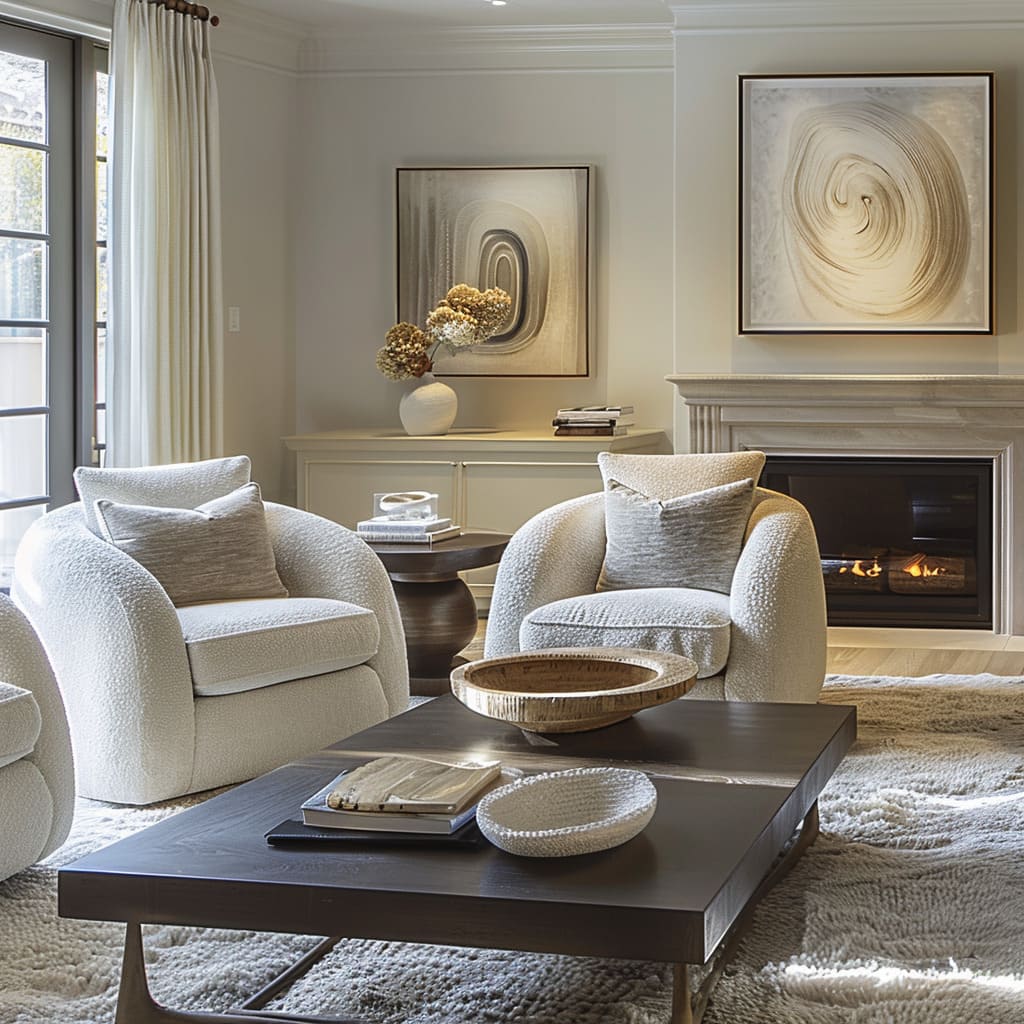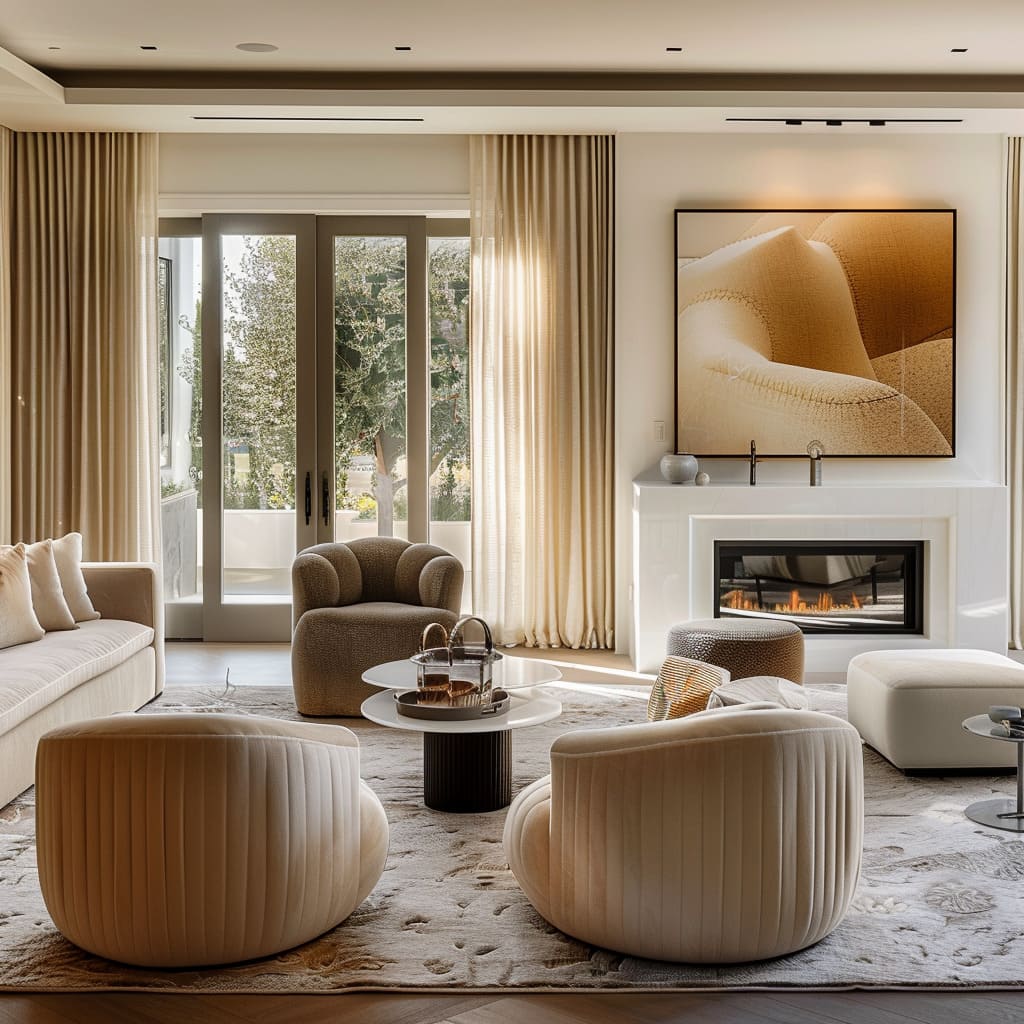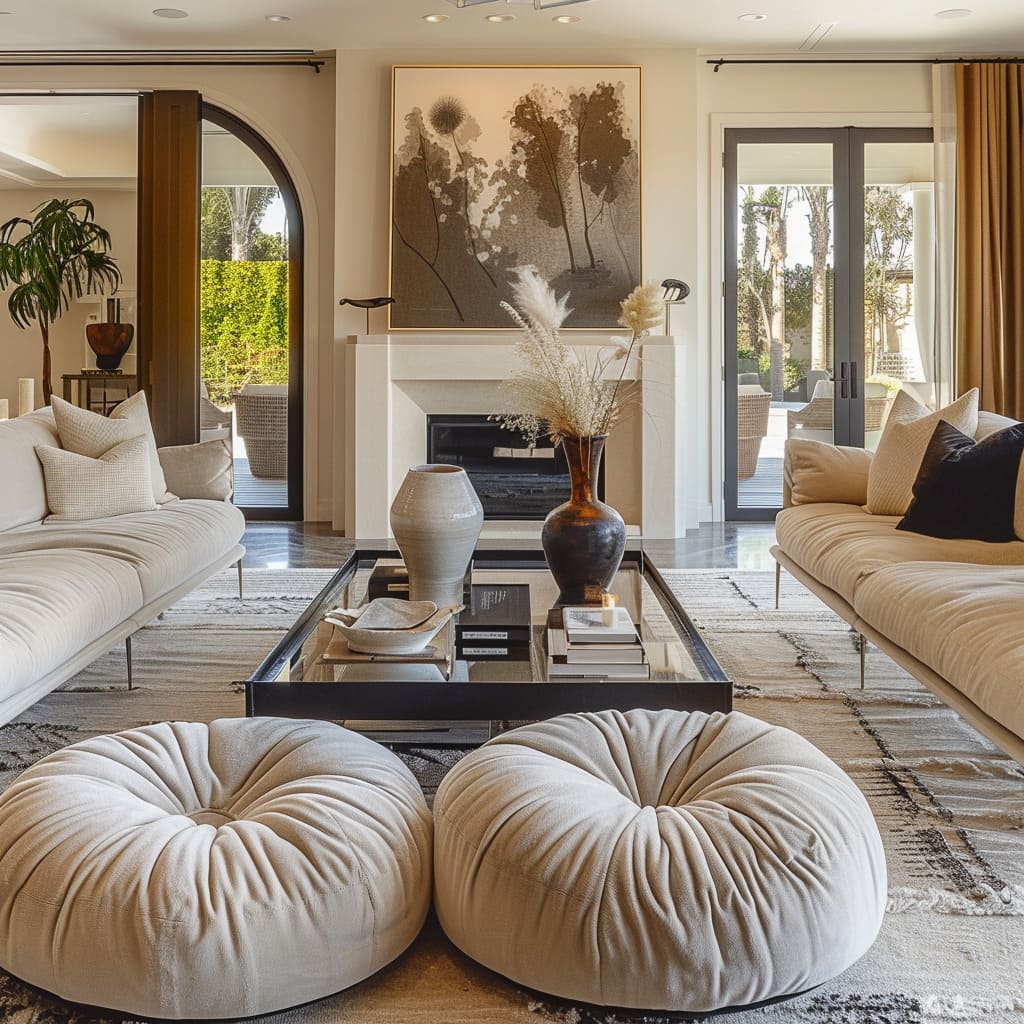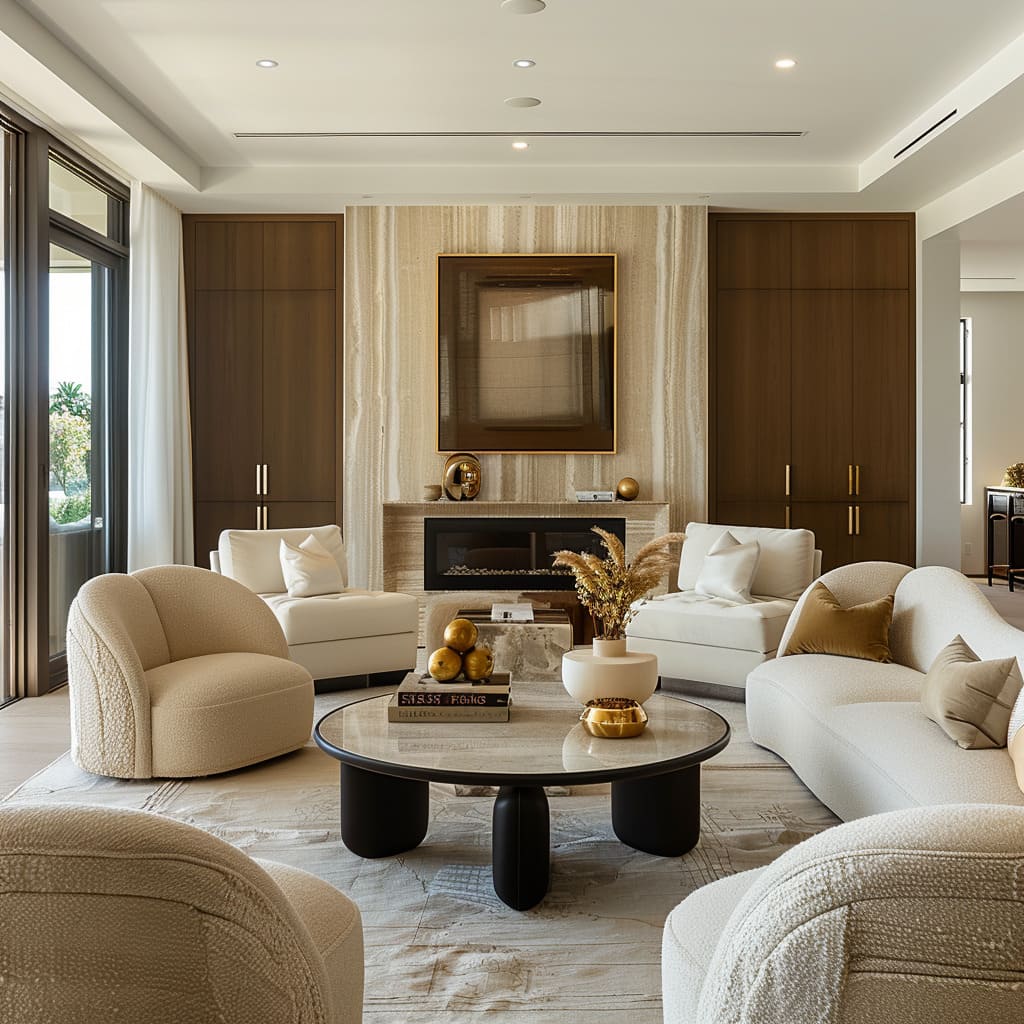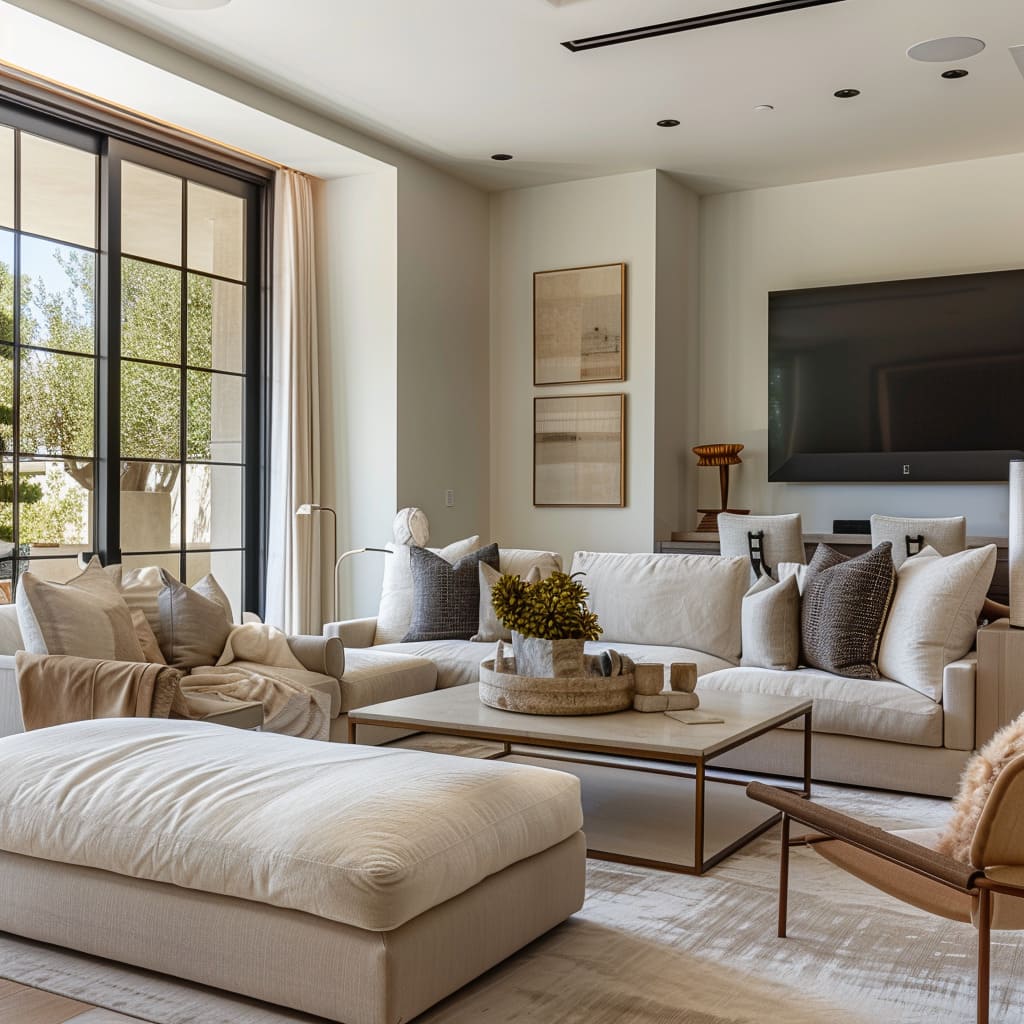In the quest for a serene habitat, modern interior design has embraced the philosophy of less is more, elevating simplicity to an art form. This article delves into the subtle complexities of a design approach that prioritizes harmony, ergonomics, and refined aesthetics, while respecting the integrity of both space and materials.
From the clever use of asymmetry to the emphasis on natural forms and organic textures, each aspect of this design style is crafted to foster an environment of calm sophistication. The strategic use of lighting enhances this tranquility, creating an ambient glow that softens the lines between art and utility.
In every textile, piece of furniture, and swath of color, there is a deliberate choice aimed at achieving comfort and visual serenity, ensuring that the living space is not just seen but felt.
As we navigate through the nuances of this design approach, it becomes clear that every element serves a purpose beyond mere aesthetics. The integration of ergonomic principles ensures that comfort is never sacrificed, while adaptive reuse and artisanal touches add layers of history and authenticity.
The careful orchestration of space—with its uncluttered surfaces and purposeful negative space—underscores the importance of what is absent as much as what is present. Through monochromatic artwork and subtle patterns, the visual narrative remains focused and coherent, revealing a design ethos that values consistency and understatement.
Aesthetic Elements
Intentional Asymmetry
By introducing deliberate asymmetry, the design avoids monotony and sparks curiosity. Furniture may be positioned off-center, or decor elements like vases and sculptures are arranged in an uneven manner, preventing the eye from settling too quickly and encouraging movement within the space.
This strategic placement of objects cultivates a contemporary ambiance that is both dynamic and unexpected, offering a fresh perspective in contrast to the classic symmetrical layouts.
Streamlined Furniture
The furniture is characterized by its refined profiles and absence of excess ornamentation. The focus is on the purity of form, with each piece embodying a functionality that does not sacrifice style.
Tables and seating are often low-slung, with clean lines that traverse the space, providing a subtle yet distinct presence. The emphasis on streamlined design not only promotes a sense of calm but also reflects a modern sensibility where less is more.
Sculptural Qualities
Decor and furniture are chosen for their ability to stand alone as pieces of art. A chair’s curved armrest or a uniquely shaped coffee table center the room much like a sculpture in a gallery, inviting contemplation.
These pieces are crafted to serve their practical purpose while also providing visual delight. Their sculptural form brings a level of sophistication and artistic flair to the environment without overwhelming the senses or detracting from the room’s cohesive feel.
Organic Forms
The design incorporates elements inspired by nature, bringing fluidity and life to the space. Curves reminiscent of natural landscapes, waves, or even the human form are present in various furnishings, like rounded chairs and undulating decorative pieces.
This inclusion of organic forms creates a link to the outdoors, fostering a tranquil and restful atmosphere. The natural shapes are a subtle nod to the world outside, seamlessly integrating the comfort and warmth of nature into the built environment.
Visual Harmony
Monochromatic Artwork
Art selections are a deliberate nod to sophistication, with monochromatic schemes that echo the room’s restrained palette. These artworks, often abstract in nature, play with shades and tints of a single color to create a visual impact that is both understated and captivating.
The simplicity of a monochromatic approach allows the art to stand as a meditative focus, drawing the viewer in without overwhelming the senses, thereby maintaining the peaceful ambiance that permeates the space.
Tonal Contrasts
The design employs tonal contrasts with a nuanced hand, leveraging the power of shadow and light to infuse life into neutral environments. This play on lightness and darkness brings out the contours and textures of the room, offering a visual hierarchy that subtly guides the eye.
These tonal variations act as silent storytellers, defining spaces within the room and enhancing the sense of dimensionality without resorting to bold color interventions.
Matte Finishes
The preference for matte finishes on surfaces is a thoughtful choice that harmonizes with the room’s soft lighting. By eschewing high-gloss sheens, the design avoids harsh reflections, opting instead for a velvety finish that soaks in the light, lending a softness to the space.
This choice of finish adds a tactile quality to surfaces, inviting touch and interaction, and furthering the room’s overall sense of serenity.
Simplified Color Schemes
Color schemes are distilled to their essence, often revolving around a duo of hues that serve as a canvas for the space. This disciplined approach to color creates a cohesive visual experience, with each tone carefully selected for its compatibility and its ability to support the overall design narrative.
This simplicity in color choice ensures a timeless elegance and avoids the distraction that can come from a more varied palette.
Sparing Use of Patterns
Patterns, when present, are applied with restraint, featuring simple geometric shapes or gentle, abstract forms that suggest rather than demand attention. This sparing use ensures that patterns play a supporting role in the design, adding interest and texture without becoming the focal point.
The result is a space that feels coherent and considered, where every patterned element exists in harmony with the design’s calm and measured aesthetic.
Concluding, this article illustrates that the elegance of modern interior design lies in its ability to marry form and function seamlessly. It champions an aesthetic that is both contemplative and intentional, inviting inhabitants to experience the space as a haven of peace and reflection.
The integration of craftsmanship, materiality, and spatial organization demonstrates that when every detail is considered, the result is not just a house, but a home that resonates with harmony and offers respite from the world outside. This design philosophy isn’t just about creating a space; it’s about curating an experience—one that is as restorative as it is beautiful.
Atmosphere and Lighting
Consistency in Design Elements
The design maintains a visual language that is coherent and harmonious across the space, employing a specific set of design motifs and materials that recur throughout. Whether it’s the repeated use of a particular wood finish or the consistent profile of furniture pieces, these elements act as a thread that ties the various components of the room together.
This repetition establishes rhythm and a sense of order, guiding the eye seamlessly from one area to another, reinforcing the design narrative and promoting a sense of well-being.
Woven Fabrics
Textiles within the space are carefully selected for their tactile appeal and visual texture. The woven aspect of the fabrics introduces a handcrafted quality that resonates with comfort and craftsmanship.
These fabrics are not only pleasing to the touch but also add a layer of richness to the decor. Whether they adorn cushions, throws, or seating, they bring an element of depth and intricacy to the otherwise streamlined environment, infusing the space with warmth and character.
Subtle Branding
Brand presence, when noticeable, is integrated with finesse, serving as a complementary addition rather than a focal point. It’s manifested in the understated logos on books or the discreet designer tags on furniture, maintaining the integrity and sophistication of the design.
This subtle approach to branding ensures that the aesthetic remains uninterrupted, allowing the quality and beauty of the pieces to speak for themselves without overt commercial messaging.
Curated Vignettes
The design includes purposefully styled arrangements that capture attention and tell a visual story. These vignettes are composed of a selection of objects that might range from books and bowls to sculptures and keepsakes, all meticulously chosen to represent a cohesive narrative.
The arrangements are spaced in such a way that each piece is given its due recognition while still contributing to the group as a whole, thus avoiding clutter and maintaining a sense of intentionality and design foresight.
Ambient Glow
The lighting scheme in the space is crafted to envelop the room in a soft, diffused light, mimicking the serene effect of natural light. Light sources are often concealed or indirect, creating a glow that softens edges and diminishes harsh contrasts.
Lamps with opaque or translucent shades are strategically placed to cast a warm illumination, enhancing the inviting quality of the space. This ambient lighting not only elevates the mood but also highlights textures and colors, lending a serene and comfortable ambiance to the environment.
Comfort and Ergonomics
Soft Window Treatments
The selection of window dressings is pivotal in crafting a serene atmosphere. The chosen curtains and drapes are made from fabrics that are luxurious to the touch, offering a graceful fall and a whisper-soft presence in the room.
Their ability to filter light casts the space in a hushed luminance, creating an ambiance that is both calming and uplifting. The window treatments move with an airy elegance, their softness contributing to the quiet luxury that pervades the space.
Ergonomic Comfort
Each piece of furniture is chosen with a dual focus on form and function, ensuring that the space is as comfortable as it is visually appealing. Seating supports the body’s contours, with an emphasis on the lower back, and surfaces are set at heights that respect the natural posture.
The ergonomic considerations extend beyond seating to all elements of interaction within the space, from the height of counters to the ease of movement around the room, prioritizing comfort without compromising on design integrity.
Comfortable Scale
Proportions within the room are carefully calculated, with furniture and accents chosen to respect the dimensions of the space. Sofas and chairs invite relaxation without imposing on walkways, and tables offer ample surface area without becoming central islands.
This sense of scale ensures that each piece relates harmoniously to the other, fostering an environment that feels both spacious and intimate. It’s a balance that enhances the room’s function while preserving its aesthetic fluidity.
Accentuated Textiles
Textiles play a significant role in enhancing the comfort and visual warmth of the space. Throws, cushions, and rugs are curated not only for their tactile quality but also for their visual harmony with the room’s color scheme.
The textiles often feature a subtle interplay of textures and patterns that enrich the design without overwhelming it. This attention to the textiles ensures that the comfort is as much a tactile experience as it is visual, enveloping the senses in layers of touch and sight.
Materiality and Craftsmanship
Contrasting Materials
The interplay of disparate materials creates a visual and tactile narrative within the space. Polished glass tabletops are juxtaposed with the raw, organic grain of wooden bases, presenting a contrast that is both modern and timeless.
The reflective sheen of metal accessories stands out against the matte finish of stoneware, providing a sensory exploration that adds depth and intrigue. These contrasts are thoughtfully curated to not only accentuate each other’s beauty but also to emphasize the natural characteristics and inherent qualities of the materials used.
Precise Craftsmanship
The details in the space speak of meticulous craftsmanship, where every joint, edge, and surface is executed with precision. Furniture pieces boast seamless transitions and fine finishes that can only be achieved through the skilled hands of master craftsmen.
The joinery is often a feature in itself, with dovetails and mortise-and-tenon joints that are not only functional but also aesthetically pleasing. It’s an ode to the time-honored traditions of craft, where the pride in workmanship is evident in the enduring quality and detail of each piece.
Adaptive Reuse
There’s a celebration of history through the practice of adaptive reuse, giving items a second life within a new design context. Objects with a past, whether vintage finds or family heirlooms, are introduced into the contemporary setting with reverence and intent.
These pieces carry with them stories and character that cannot be replicated, offering a bridge between the past and the present. It’s a sustainable approach that imbues the space with depth and a sense of continuity.
Artisanal Touches
The space is enriched with elements that have been touched by the hands of artisans. These pieces, often found in the decorative accents, show the mark of handcrafting, from a thrown ceramic vase to a hand-woven basket.
The slight irregularities and unique variations in these items lend a soulful quality to the environment. They serve as a reminder of the human element in design, bringing warmth and personality into the sleek and well-considered interior.
Dynamic Textures
A rich tapestry of textures adds vitality and movement to the space. Soft, nubby fabrics on upholstered furniture invite touch and contrast with the smoothness of leather or the crispness of linen.
Rugs may have a high pile that tempts the feet with softness, set against the cool, hard surface of stone flooring. The layering of textures creates a sensory experience that is both stimulating and cohesive, ensuring that the space feels lived-in and welcoming while retaining its refined aesthetic.
Consistency in Design Elements
Subtle Textural Contrasts
The unity of the space is accentuated by the careful selection of textural elements that complement rather than compete with one another. The soft weave of a throw pillow might sit upon the smoother canvas of a sofa, while a knotted rug rests on sleek hardwood floors, offering a visual break that’s pleasing to the eye.
These contrasts are finessed with a light hand, ensuring they contribute to the overall tranquility of the room. Even within a monochromatic scheme, these textural variances provide a sense of depth and dimensionality that enriches the space without cluttering it visually or tangibly.
Discrete Use of Color
Color is applied with intention and restraint, often emerging in muted tones that whisper rather than shout. A cushion might feature a stripe of color that echoes a hue from a piece of artwork, or a vase might introduce a solitary but harmonious pop against a neutral backdrop.
This controlled palette enables each application of color to have a purposeful impact, contributing to a narrative that is both cohesive and visually stimulating. It’s a strategic use of color that allows for personality and warmth to be woven into the design narrative seamlessly.
Spatial Organization
Uncluttered Surfaces
Surfaces are meticulously curated to host only the most essential or meaningful items, fostering an atmosphere of tranquility and order. Decorative items are selected for their ability to enhance rather than crowd the space, with every object chosen for its contribution to the room’s aesthetic and emotional tone.
This disciplined approach to styling surfaces ensures that each piece can be appreciated in its own right, with plenty of breathing room to prevent the environment from feeling cramped or chaotic.
Integrated Storage
Storage is a subtle art in this space, designed to be almost invisible yet entirely functional. Cabinets and shelves are flush with the walls, with handles and hardware often recessed or minimal to preserve the streamlined look.
This integration of storage into the very architecture of the room ensures that the visual flow remains uninterrupted by bulky furniture or protruding elements, allowing the beauty of the space to take center stage.
Low-profile Furniture
The furniture maintains a low horizon line, reinforcing the expansive feel of the room. Sofas and chairs with low backrests and beds close to the floor contribute to a landscape that feels grounded and restful.
This horizontal emphasis draws the eye outward, enhancing the perception of space and creating a layout that is both intimate and inviting. The choice of low-profile pieces is deliberate, striking a balance between comfort and the minimalist ethos that underpins the room’s design.
Purposeful Negative Space
In this design philosophy, negative space is treated with the same respect as physical objects. The spaces between furniture are as intentionally designed as the pieces themselves, creating a rhythm that guides movement and draws attention to the form and structure of the room.
This considered use of emptiness allows the room to breathe and provides a visual rest, ensuring that the space is balanced, uncluttered, and aesthetically harmonious.
Concluding, this article illustrates that the elegance of modern interior design lies in its ability to marry form and function seamlessly. It champions an aesthetic that is both contemplative and intentional, inviting inhabitants to experience the space as a haven of peace and reflection.
The integration of craftsmanship, materiality, and spatial organization demonstrates that when every detail is considered, the result is not just a house, but a home that resonates with harmony and offers respite from the world outside. This design philosophy isn’t just about creating a space; it’s about curating an experience—one that is as restorative as it is beautiful.


